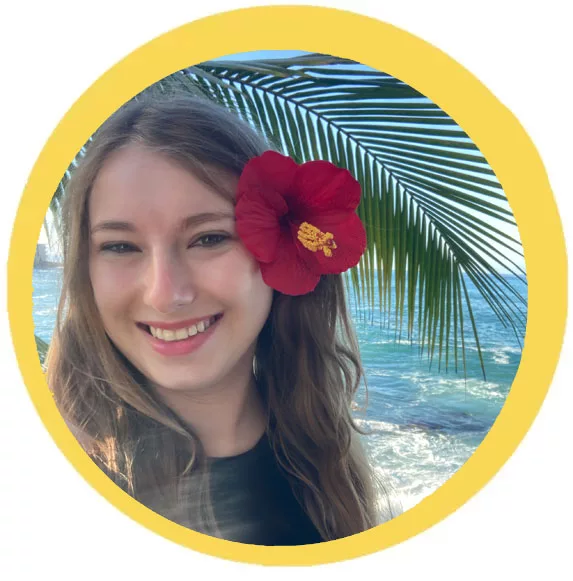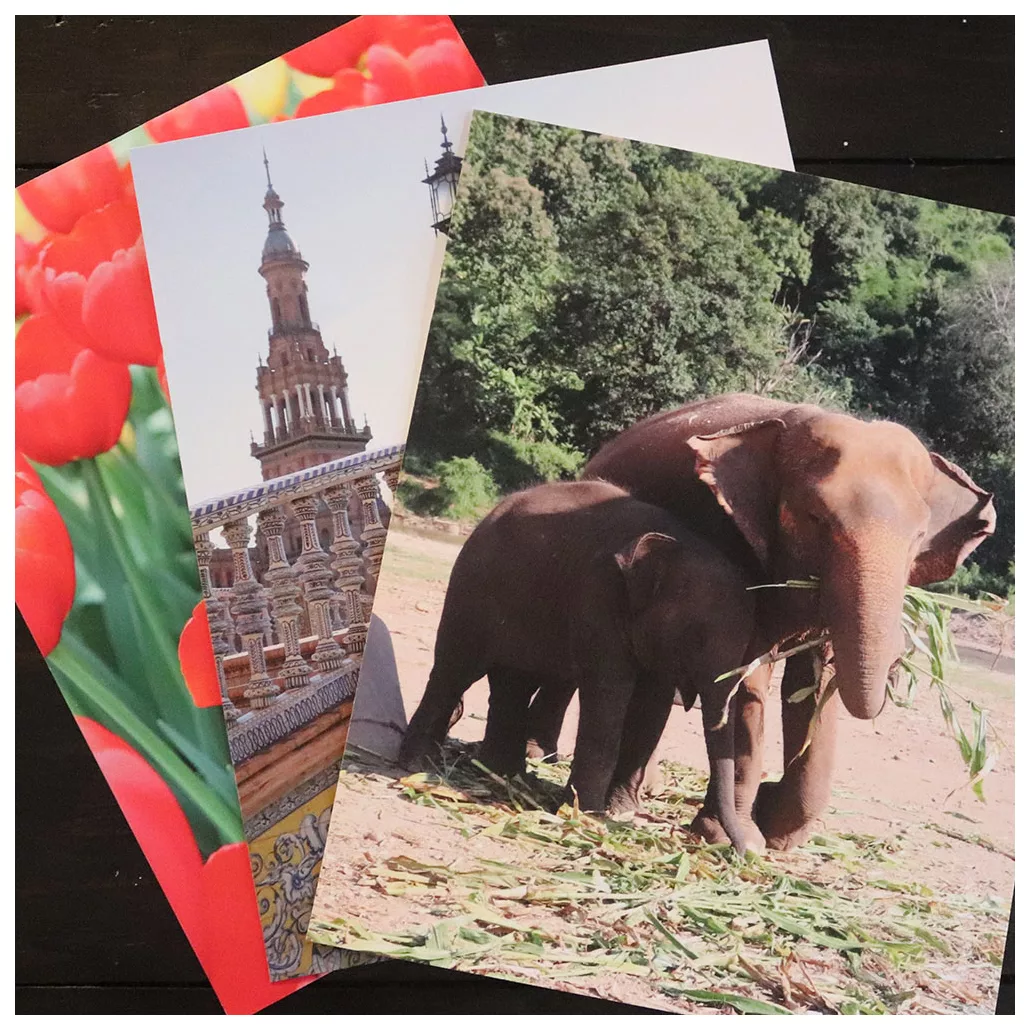Prague, the City Between the Medieval and Mucha
Last updated on April 10, 2025
Prague has always been high on my list so I was super excited when I scored cheap-ish plane tickets there. I absolutely loved it, and I got to do and see a lot in the few days I had there. The museums can be quite expensive and Prague doesn’t have a great combo pass, so I hope this guide is helpful in deciding what to (and what not to) see.
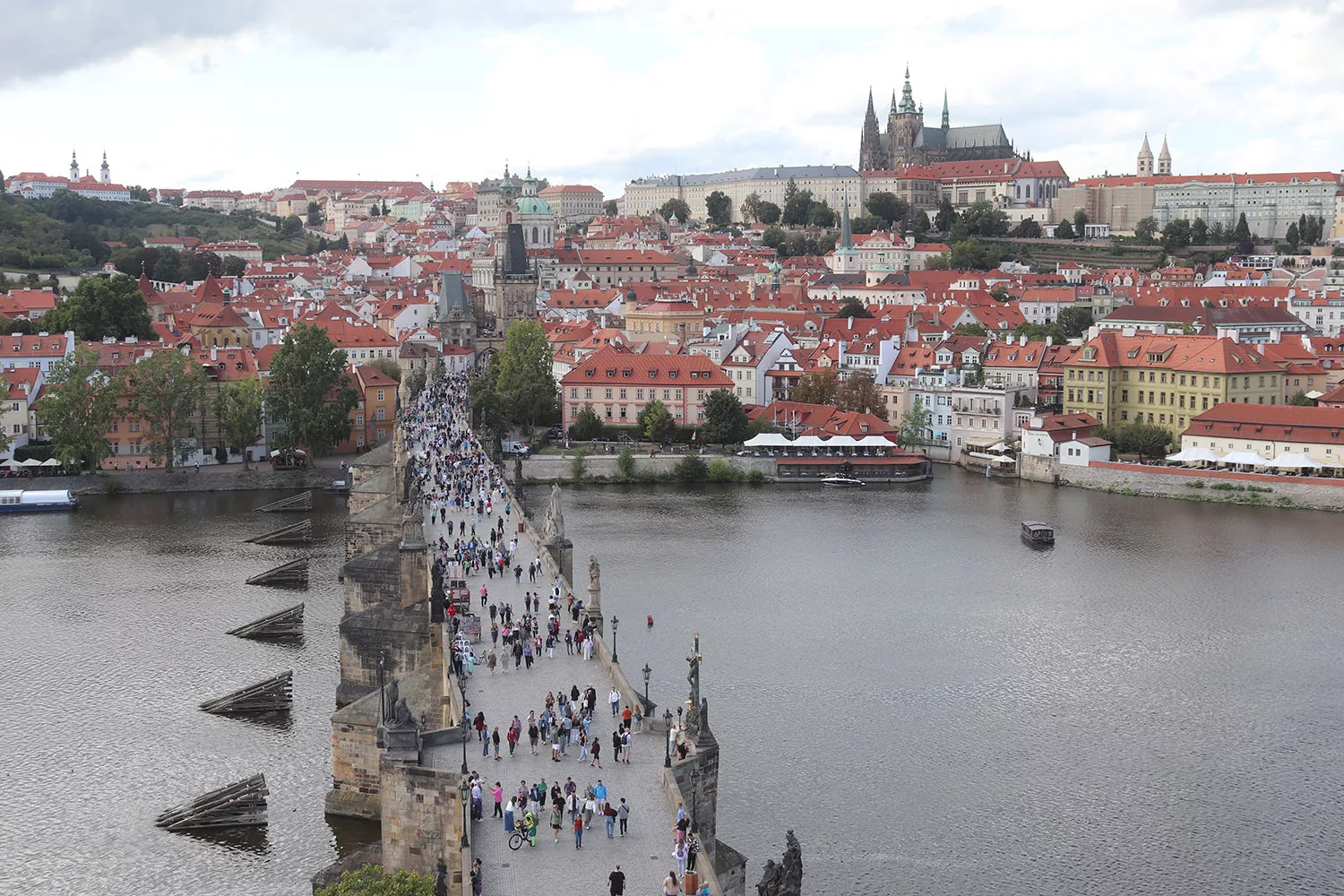
A Brief History of Prague
The area around Prague was first permanently settled by Slavic and Germanic tribes and it became a city in the 800s, at the site of Prague Castle. The tribes in the area were unified as Bohemia and Prague then became the seat of the Dukes. It wasn’t until the 13th century that the Old Town was founded, about 400 years after the start of Prague Castle’s construction.
Holy Roman Emperor Charles IV made substantial changes to the city, which is why his name is everywhere. In the middle of the 14th century, he made Prague the imperial capital which of course helped its economy flourish. It took a downturn when the Hussite Wars were sparked in the early 15th century. It later became a part of the Hapsburg dynasty and then the Austrian Empire. After 1918, Prague became the capital of Czechoslovakia.
Prague had a rough time after that. After being invaded by Nazis, Czechoslovakia became a satellite state of the USSR. In 1968 there was a movement called the “Prague Spring” in which the citizens moved to become more democratic, but the Russians squashed the movement. The city was finally free in 1989 and Czech Republic became its own country with Prague as its capital in 1993.
The Essential Sights & Museums of Prague
Debatably the most famous sight in Prague is the Astronomical Clock which dates all the way back to 1410 and still works! I will not even begin to try to explain how read the clock since I don’t understand it myself, but I will share some links here and here that are fairly straight forward. The clock has a short “show” it performs every hour on the hour, active from 9am-11pm. It’s just a small show but I will never not be impressed by the amount of work and intelligence that had to have gone into such a clock, and how old it is.

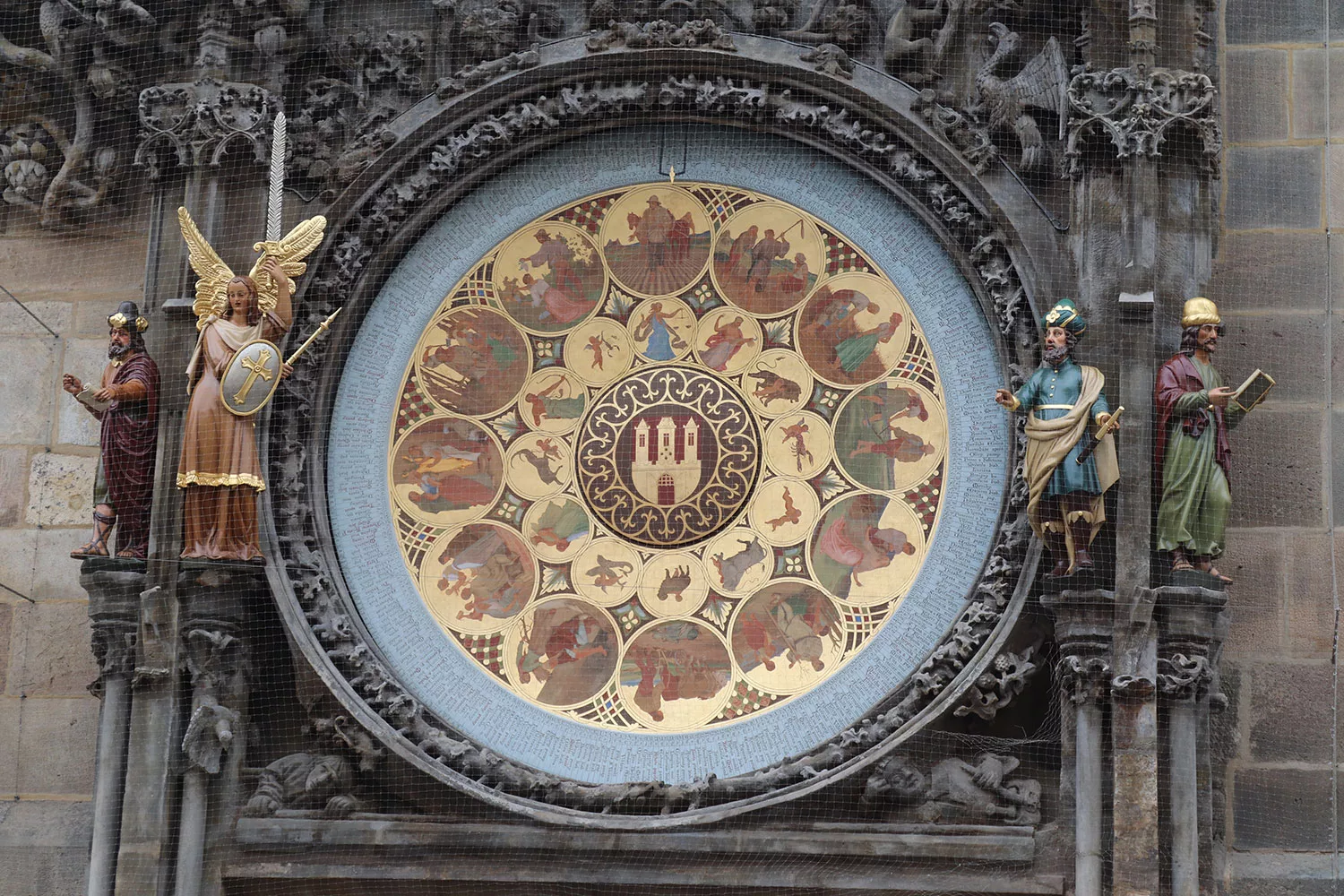
Czechia is also a country that has name days, which are indicated at the bottom of the clock. The closest for me is “Liliana” which is February 25th. 🙂
Also look next door to the House at the Minute, a medieval home with beautiful early 17th century frescoes. You can’t go inside but this was funnily enough the home of Franz Kafka’s childhood.
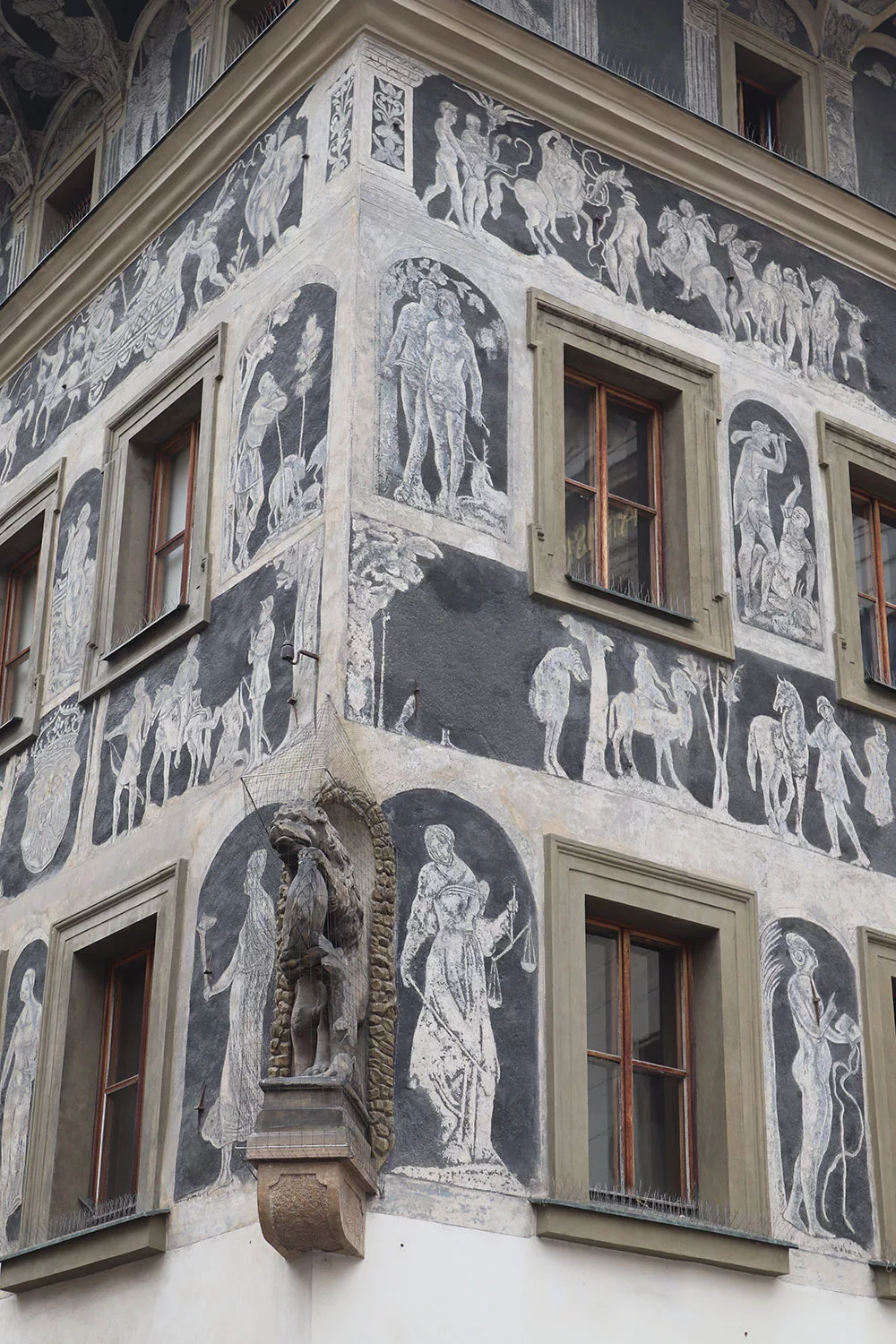
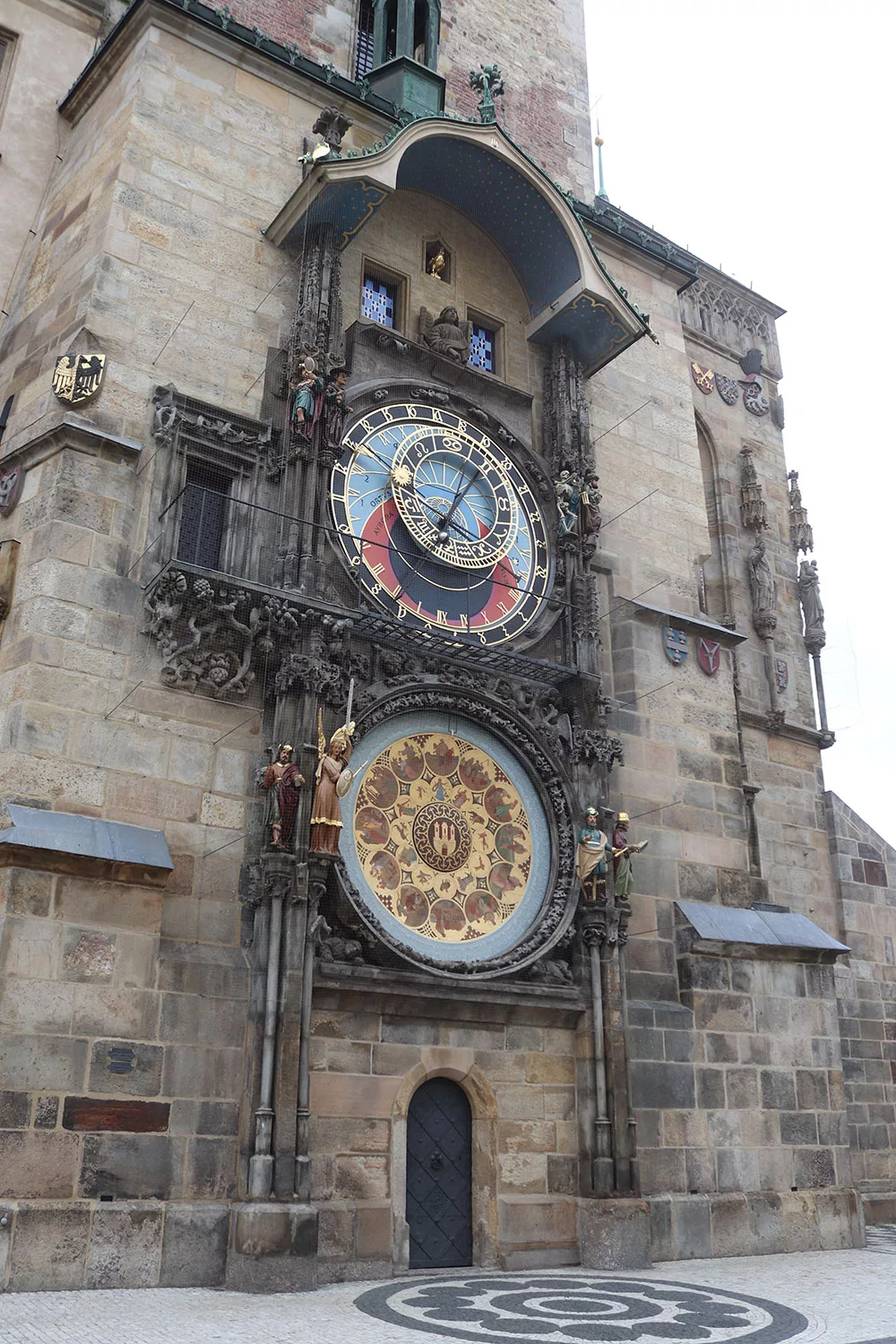

The clock is off of the famous Old Town Square with is home to the Church of Our Lady before Tyn, dating to the 14th century but redone in the Baroque style. You’ll need to go through the archways of the Tyn School (now a cafe/gift shop) to enter the church, which is free to pop in. I can’t find exactly why the school was built in front of the church, which today looks like poor planning. But the school building dates to the 13th-14th century, so I’m guessing it was a preexisting building and the church had to be built on that specific spot.
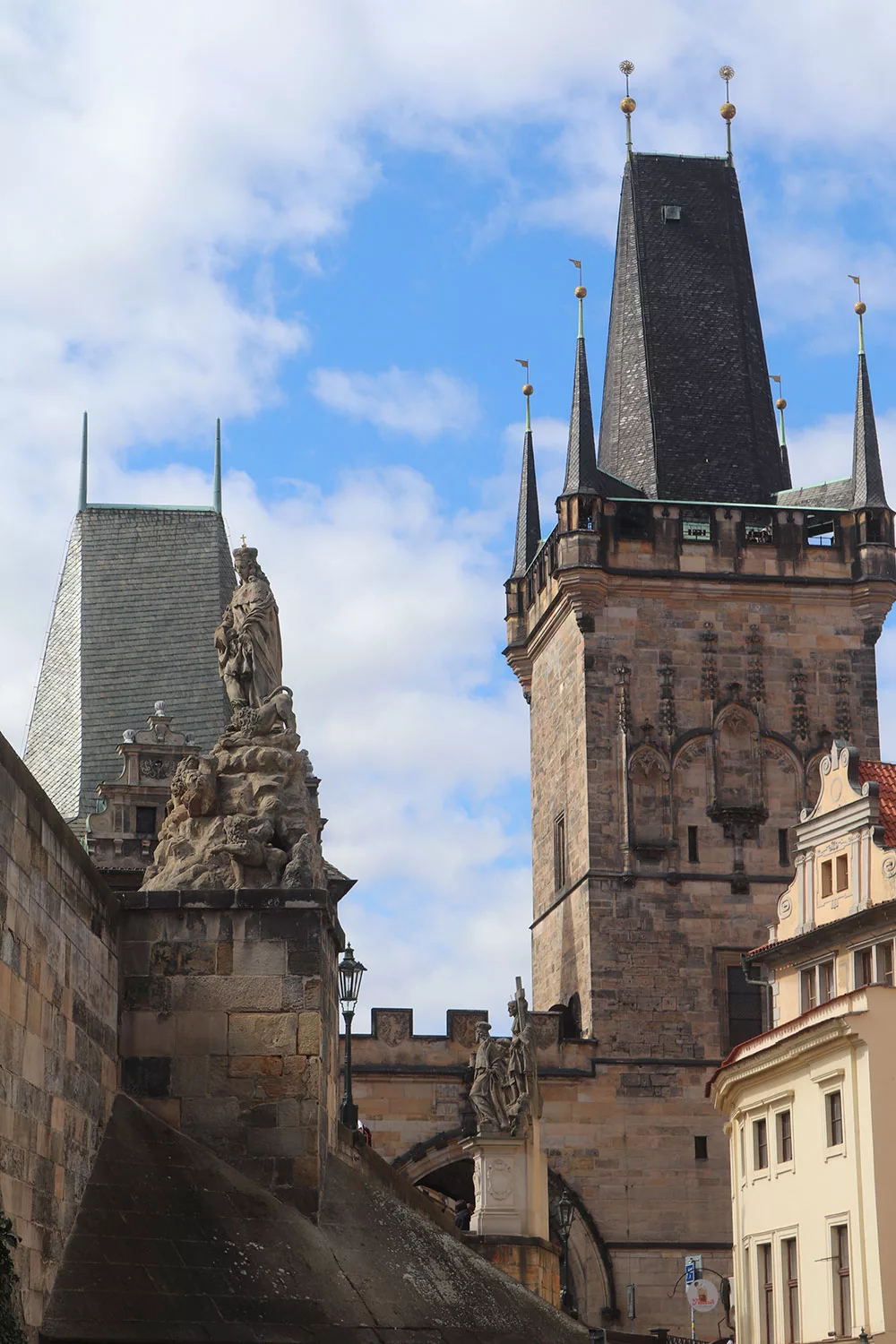

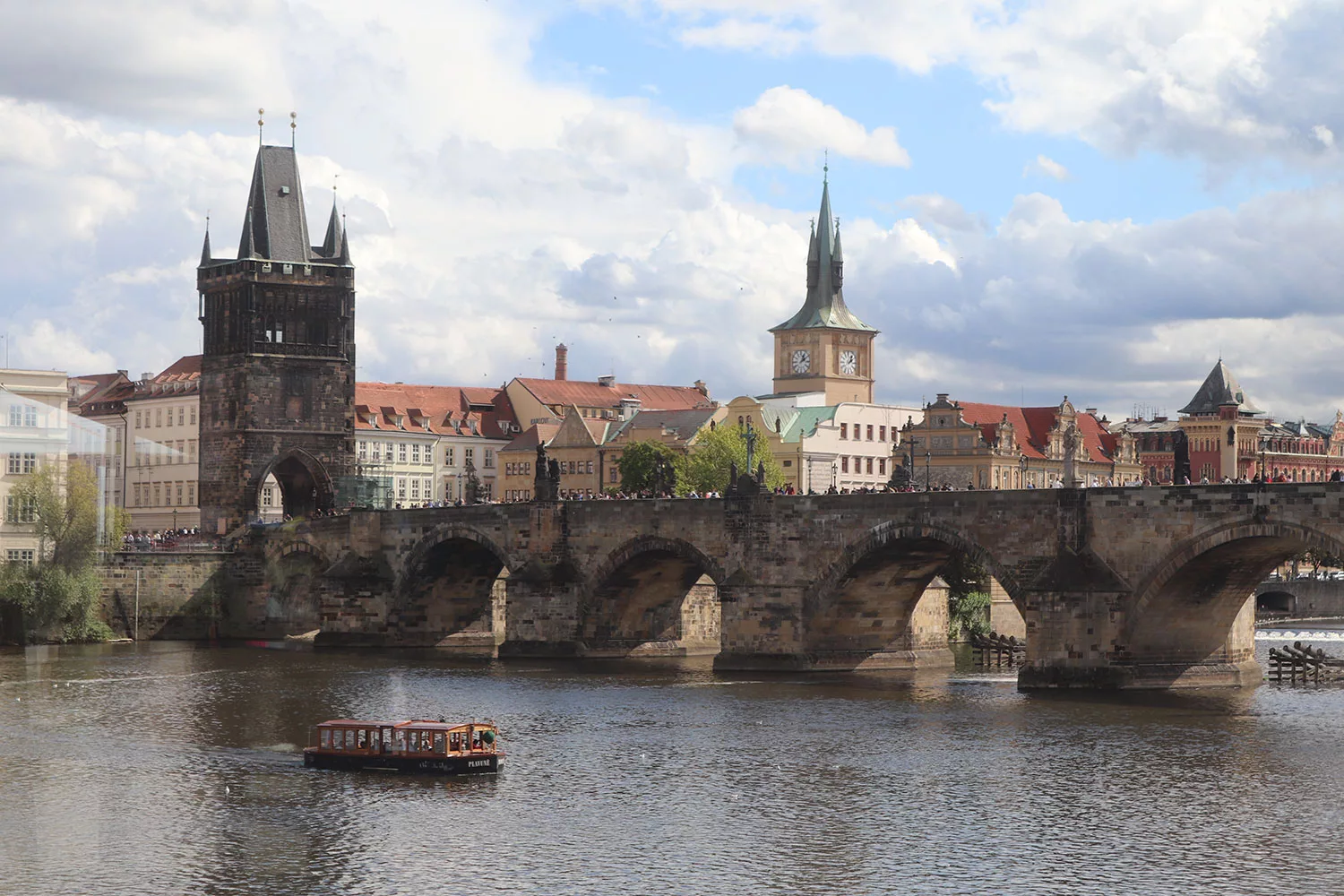
Of course you’ll want to go and see the beautiful Charles Bridge. The current bridge itself was finished in 1402 with the statues dating to the early 18th century. It connects the Old Town to the Lesser Town and is the most beautiful bridge in Prague, hands down. It’s filled with tourists but is absolutely still worth a visit.
The Old Town Bridge Tower apparently dates to the 13th century where the predecessor bridge, Judith’s Bridge, was, but was heavily reconstructed in the 19th century. You can go inside for a small museum and excellent views over the city, but I personally thought you could get some good views on the stairway up but before you get to the ticket office.
I didn’t go inside the Less Town Bridge Towers but they have a similar history.
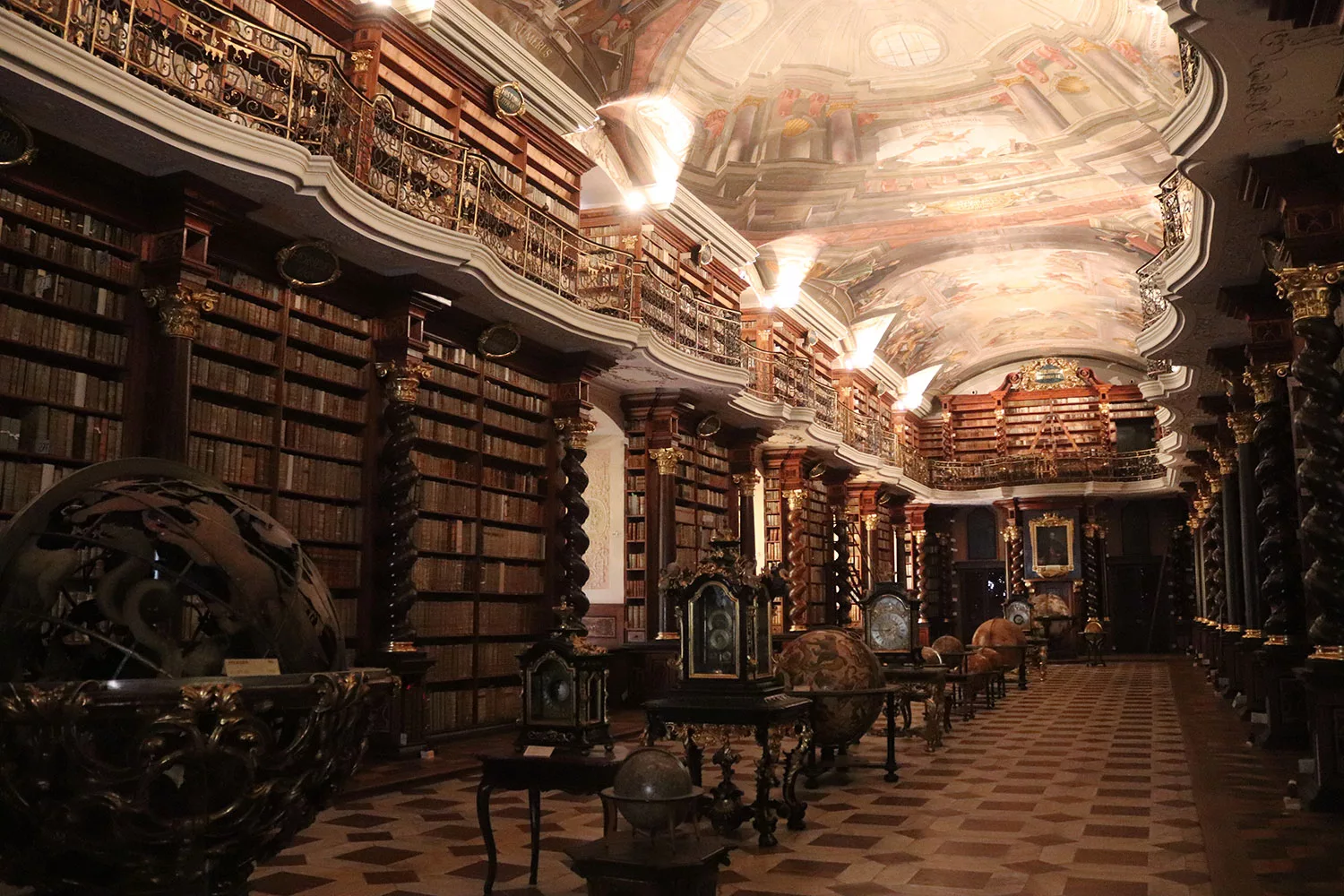
Another icon of Prague is the beautiful Klementinum Library. It’s the famous Baroque library that dates to 1722. Get your tickets beforehand since they sell out. You have to buy advanced tickets online. The tours are timed and last about an hour. You get to see the beautiful Baroque library but you can’t go inside and I must say, it’s very dark. There are no lights on and even in the middle of a sunny day, there was not good sunlight in the library.
The tour will also take you up lots of steep steps to the Astronomical Tower. I found this less impressive but you get excellent views over Prague once you get there.
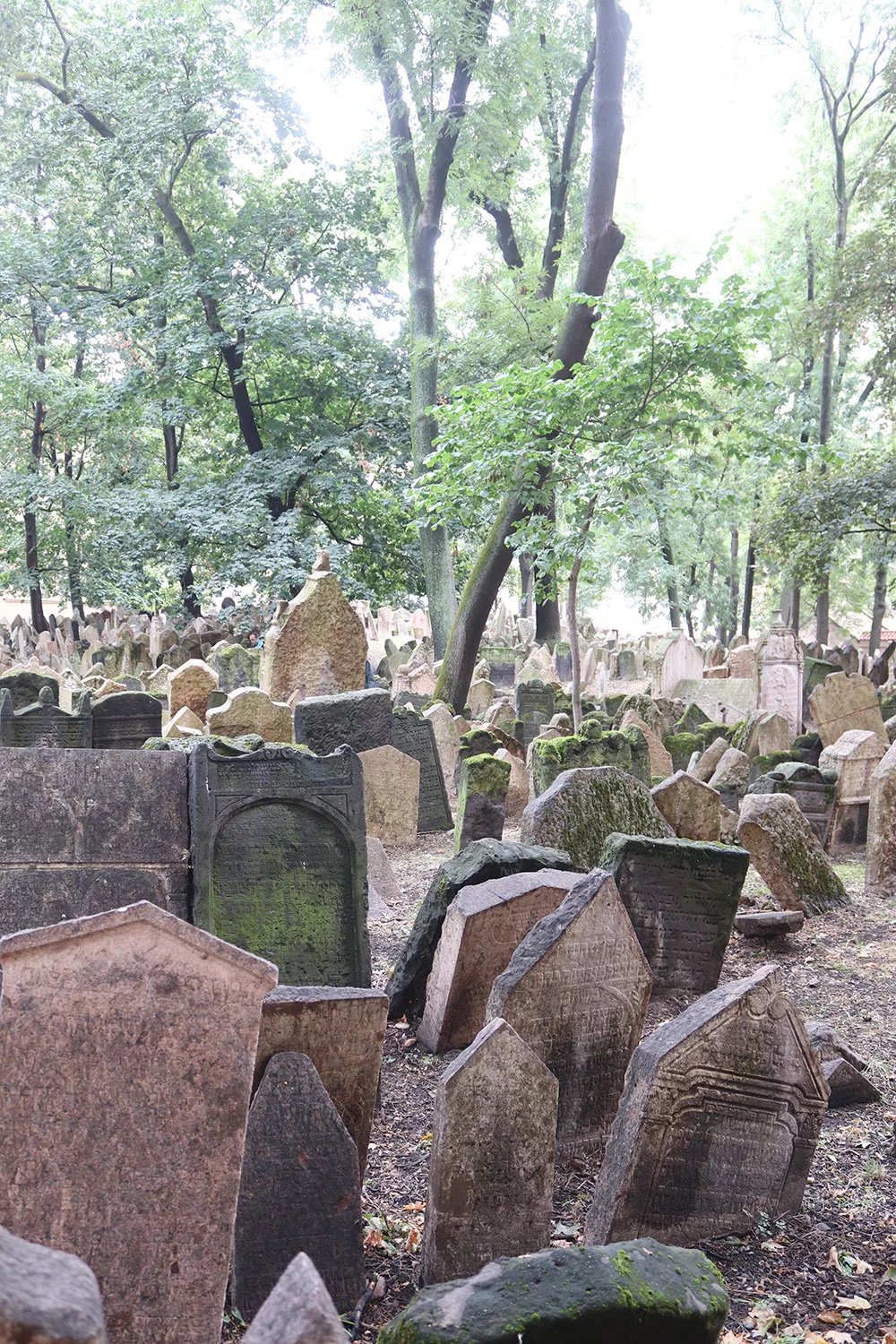
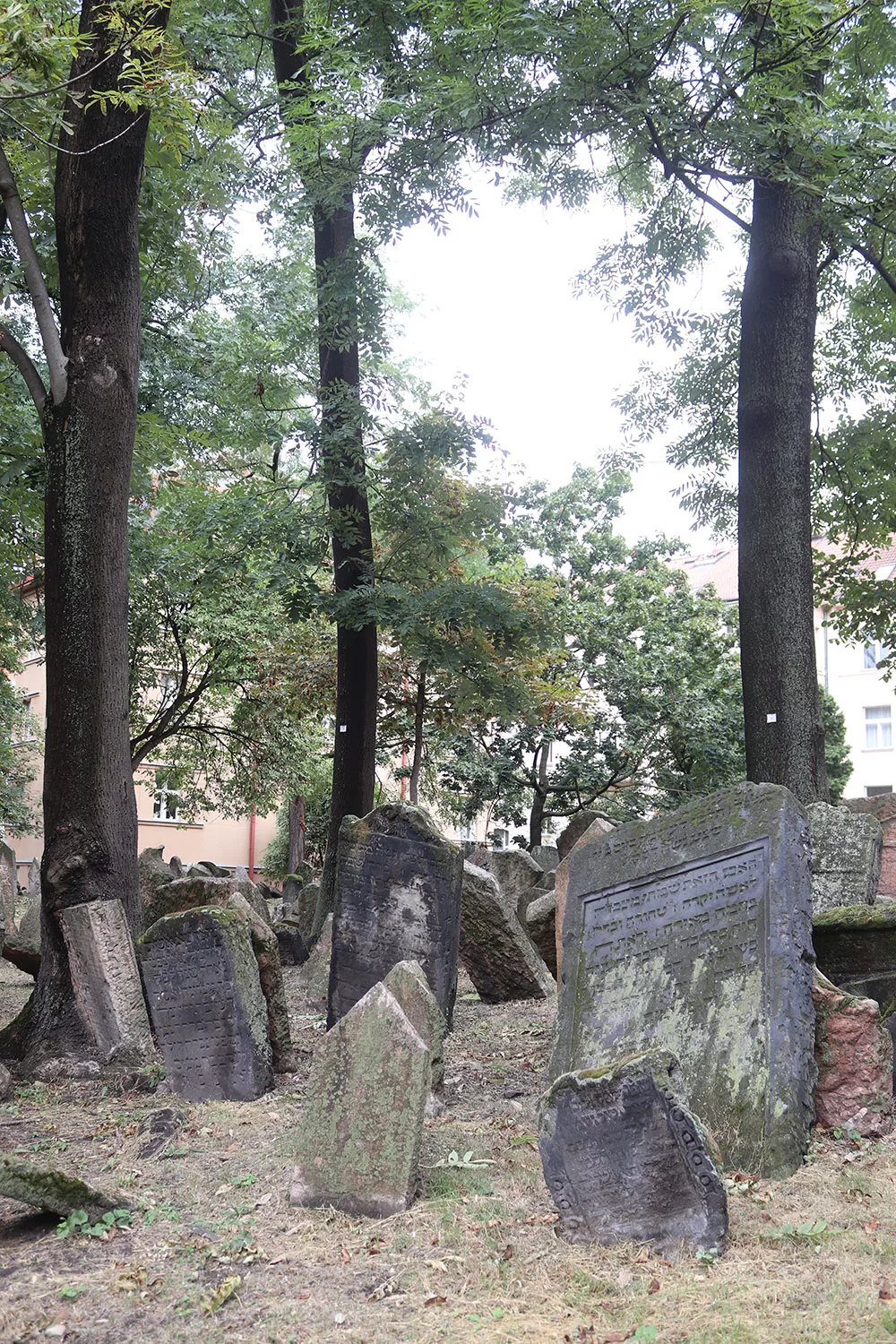
Before you leave the Old Town, I strongly recommend a visit to Pinkas Synagogue and the Jewish Cemetery. These didn’t capture my interest at first but when I got to Prague, I learned that the synagogue is now used as an exhibition space in memory of the Jews who were deported and murdered under the Nazi regime. There’s an excellent and sobering exhibition of children’s drawings from a Czech concentration camp, Terezin. It’s emotional but very much worth the visit.
The Jewish Cemetery is unique in that the dead were buried on top of each other over several centuries because the Jewish population wasn’t allowed any more land to settle.
Your ticket to Pinkas Synagogue includes entrance to the cemetery as well as the other synagogues of Prague. It’s an expensive ticket but worth it.

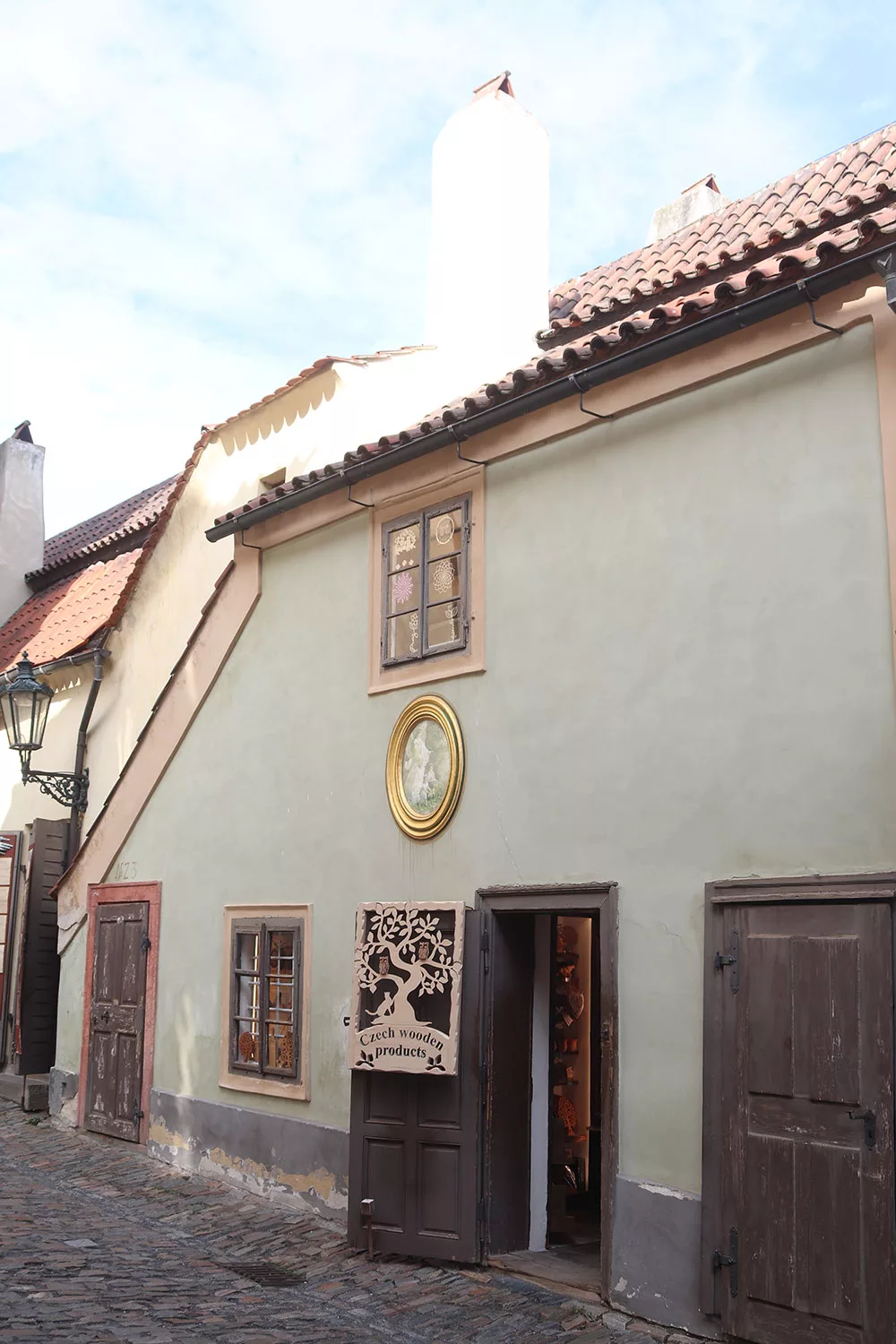
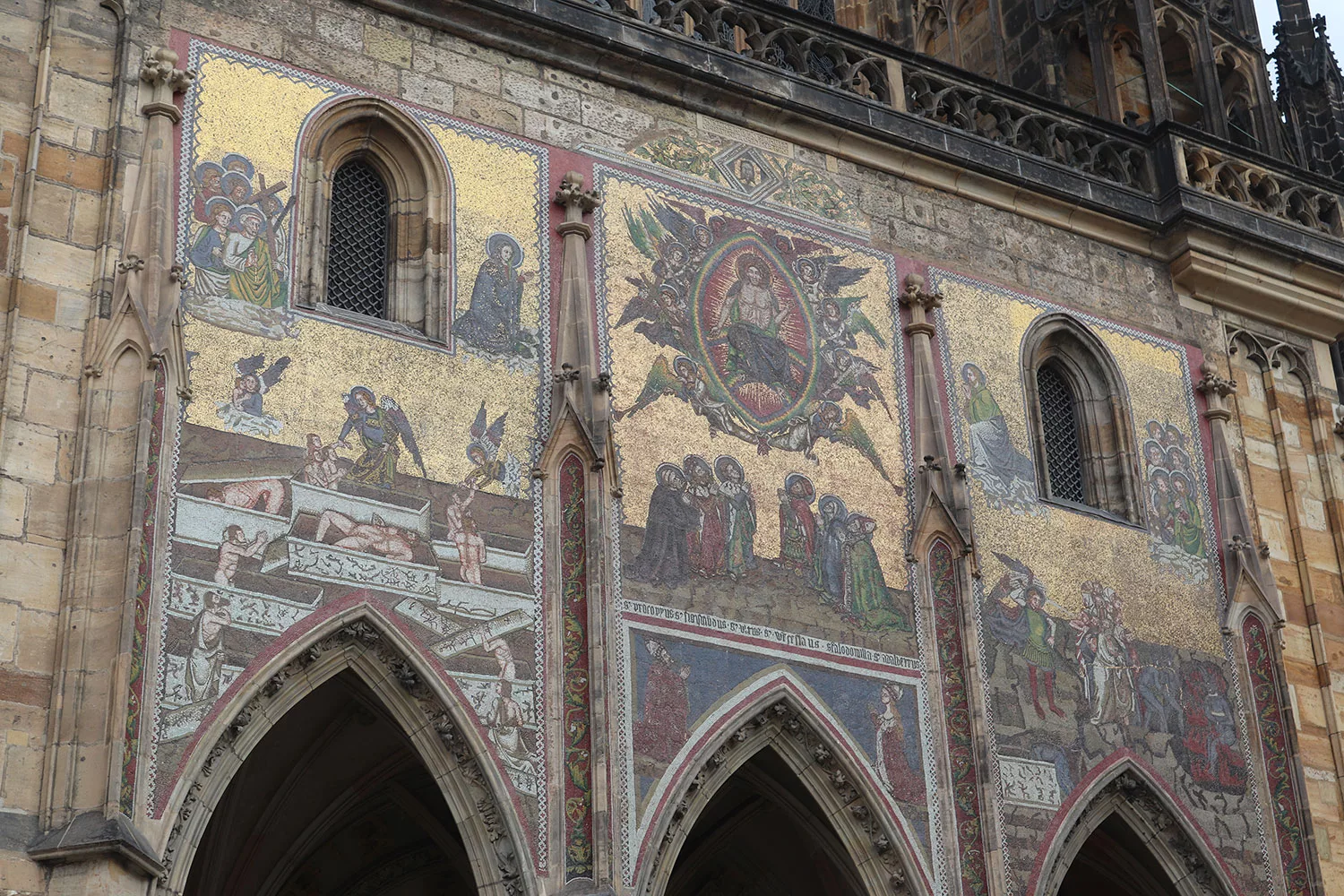
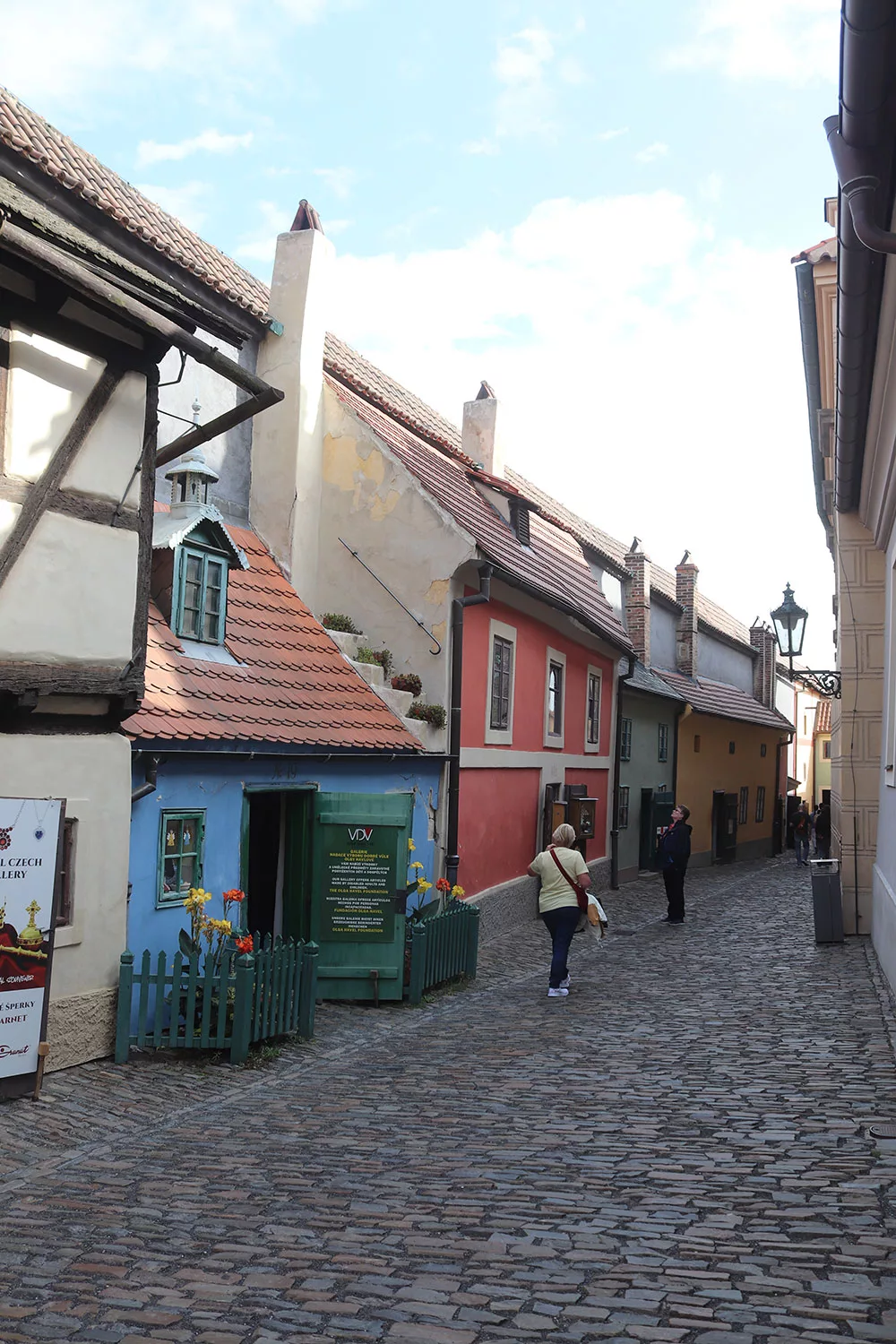
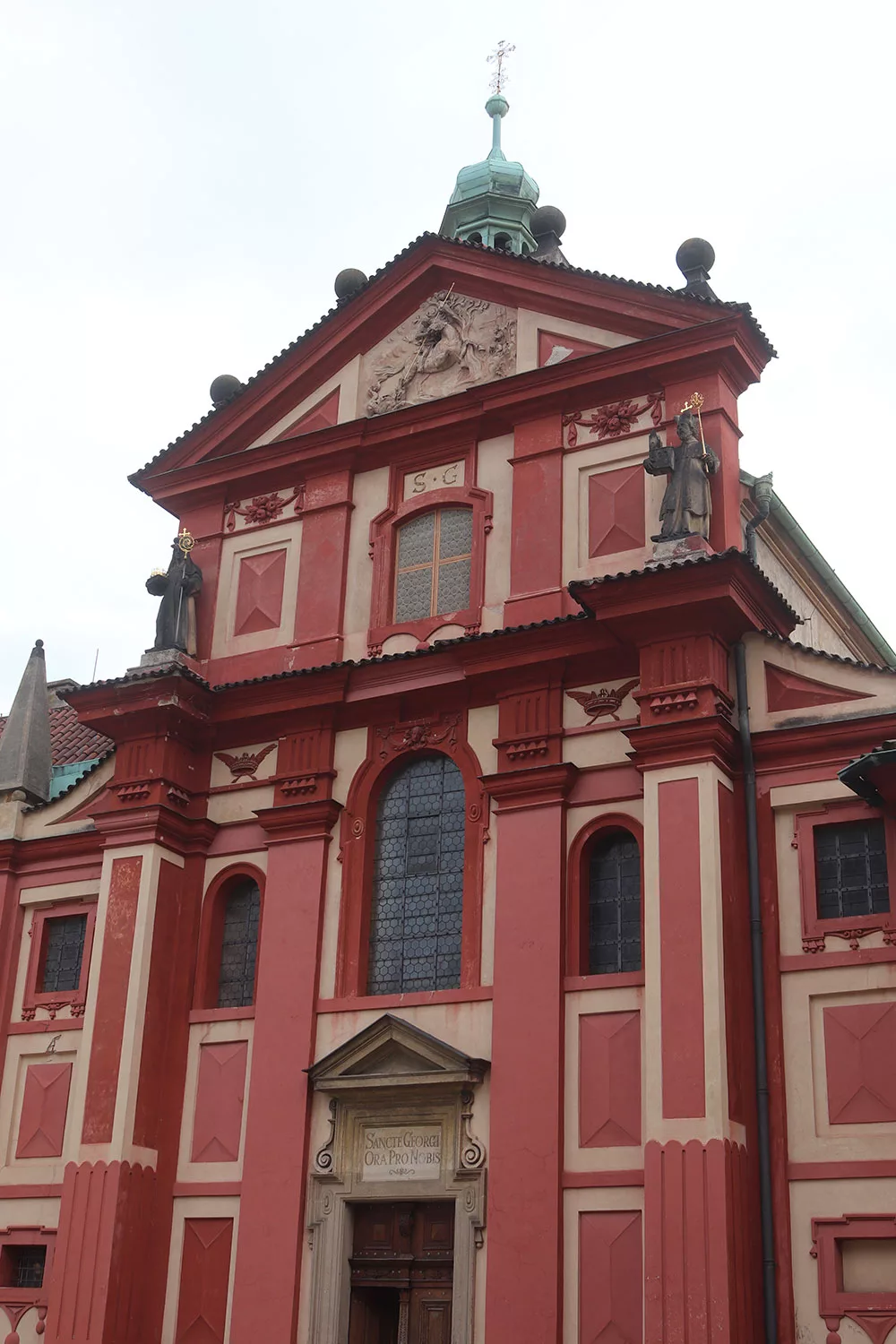
Across the bridge is the icon Prague Castle, a collection of buildings, which you can access by tram or by walking up a tall set of steps. The grounds are generally free to visit but you will need tickets to visit the “routes.” There are two routes. At the time of my visit, the routes were:
Main Circuit: Old Royal Palace, St George’s Basilica, Golden Lane, St Vitus Cathedral
Permanent Exhibitions: The Story of Prague Castle, Castle Guard Exhibition, Prague Castle Picture Gallery, Rosenberg Palace
I highly recommend at least taking the Main Circuit because St Vitus Cathedral is absolutely stunning. I think something was closed or under construction on the permanent exhibitions (something always is, right?) so I did the main circuit only and was a bit disappointed I didn’t get to see the other exhibitions. But to be fair, the tickets for both were quite expensive.
The Old Royal Palace is not super exciting. St. George’s Basilica is not super exciting. Golden Lane is a cute little row of houses where people like Franz Kafka actually used to live. Some are souvenir shops and others are designed to look like different eras of the past.

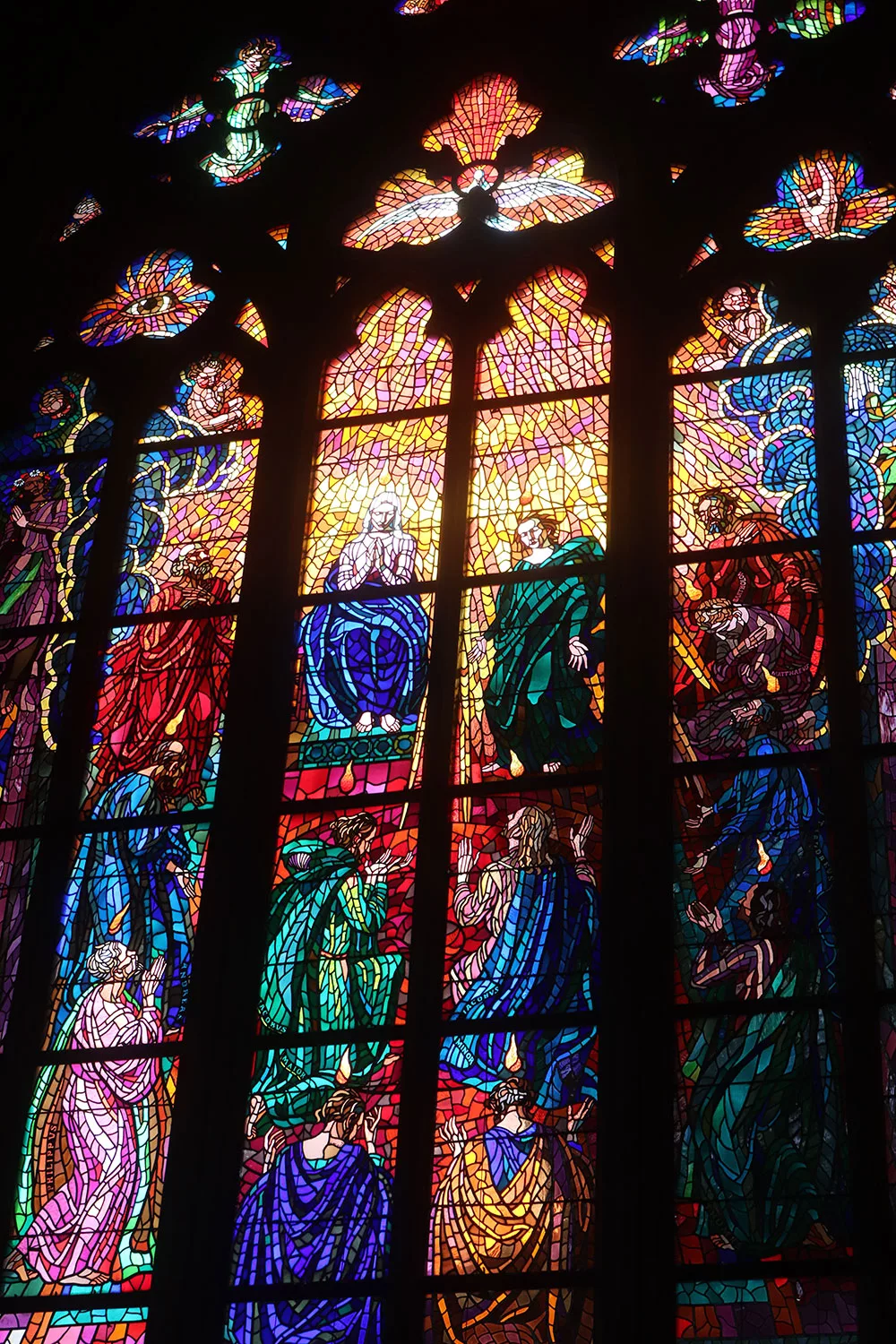
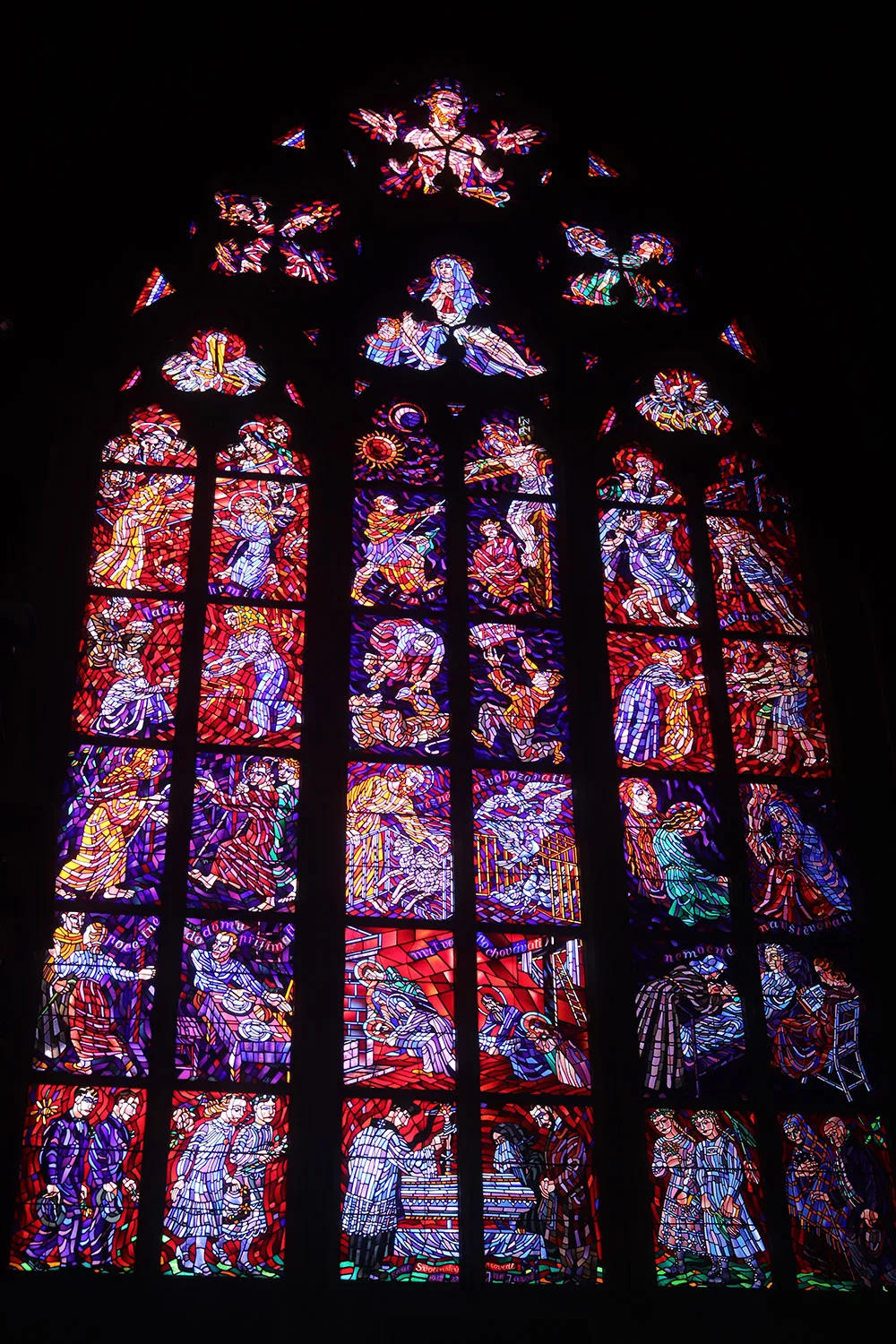
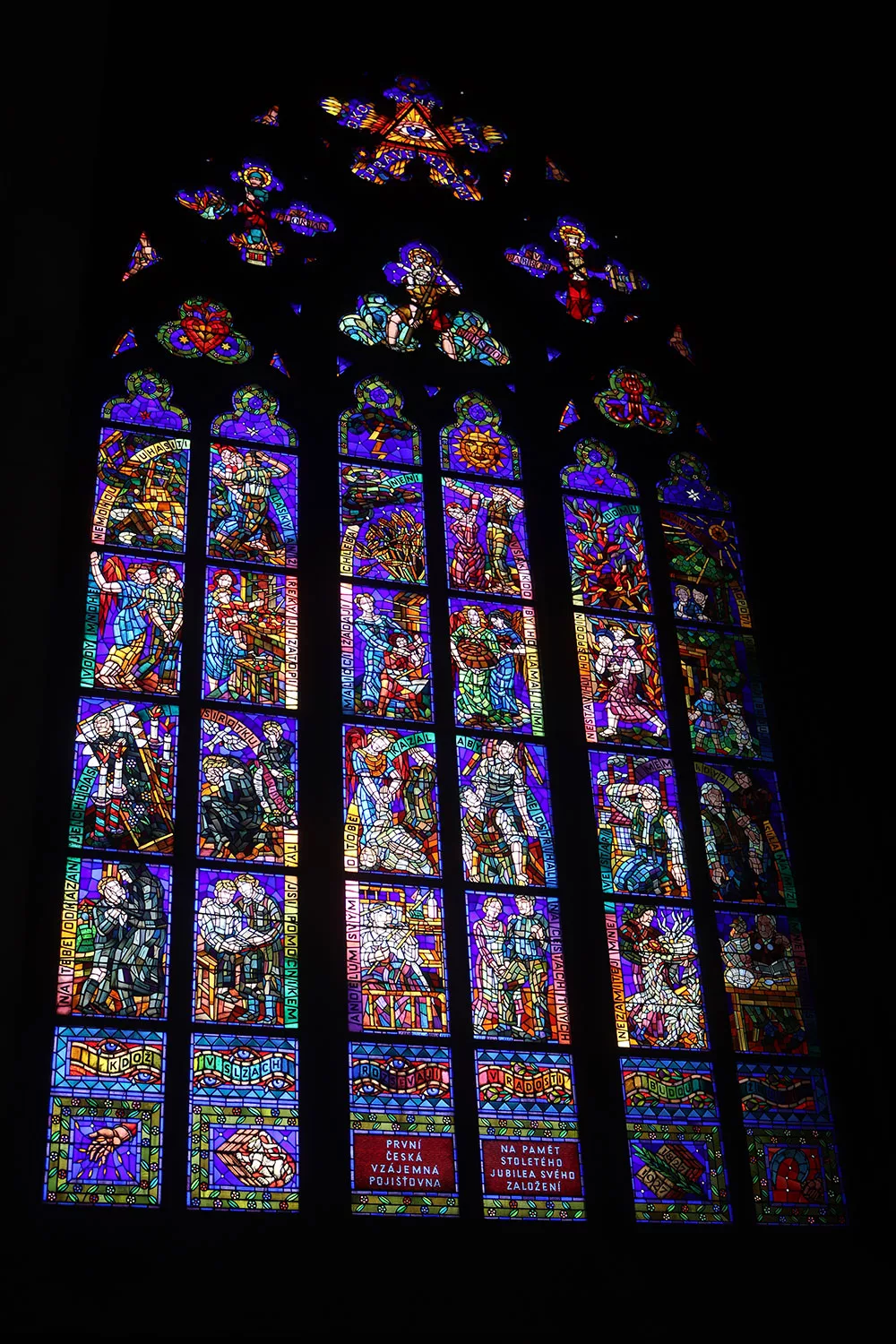
But I loved, loved, loved St Vitus Cathedral and it is probably my favorite place in Prague. The cathedral as it stands now was started in 1344 and it took several centuries to finish. A lot of the cathedral parts were started but not finished, but it was finally completed satisfactorily in 1929!
I’m a huge fan of Gothic architecture but what I really loved about the cathedral was the amazingly colorful stained glass. The medieval stained glass no longer remains so the glass we see today was designed in the 19th-20th centuries. The most notable is the one by Alphonse Mucha (above, top left), Prague’s most beloved artist. I really love colorful stained glass itself but I like how this one in particular has a rainbow gradient element to it almost.
Obviously I can’t recommend a visit to the cathedral enough.
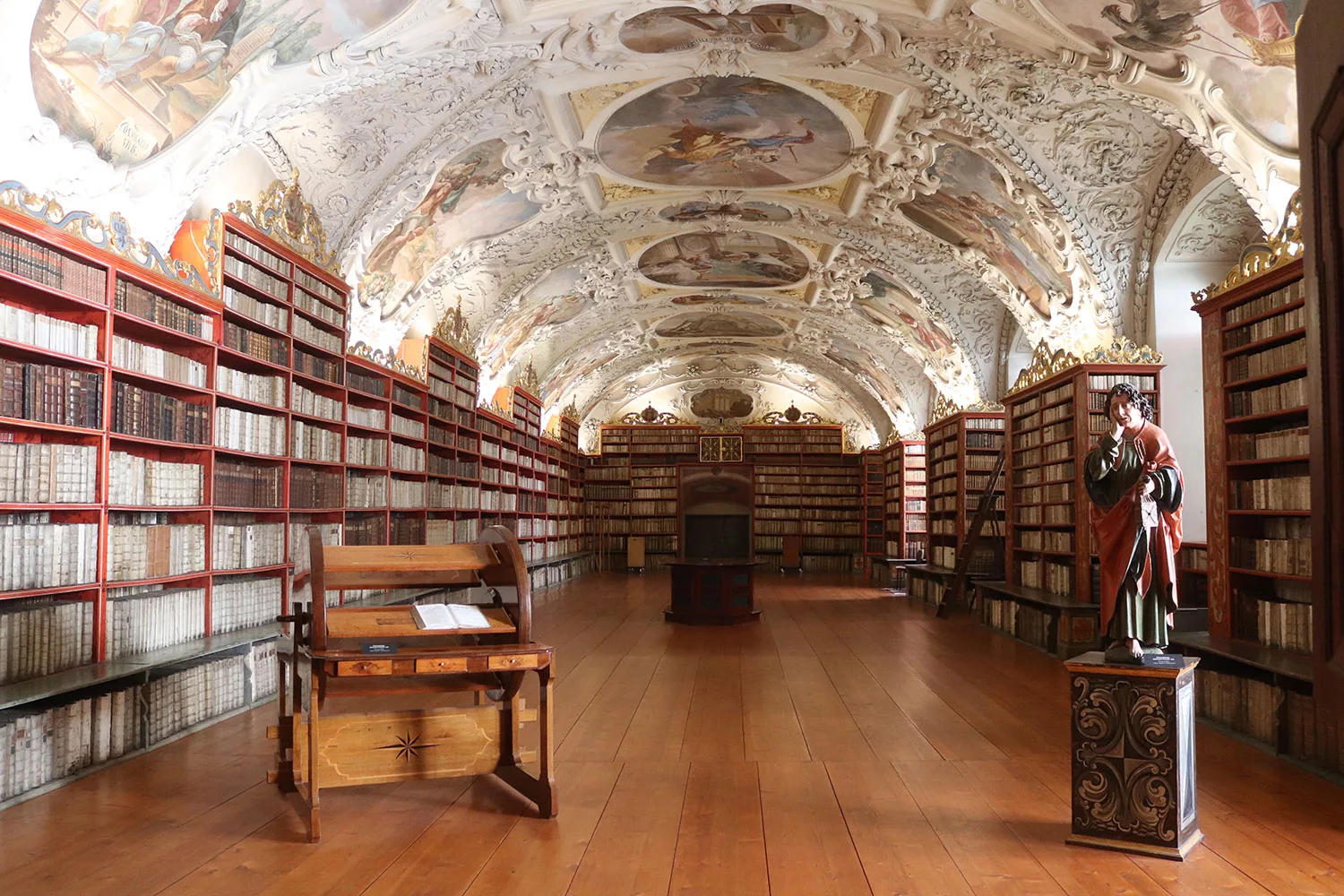
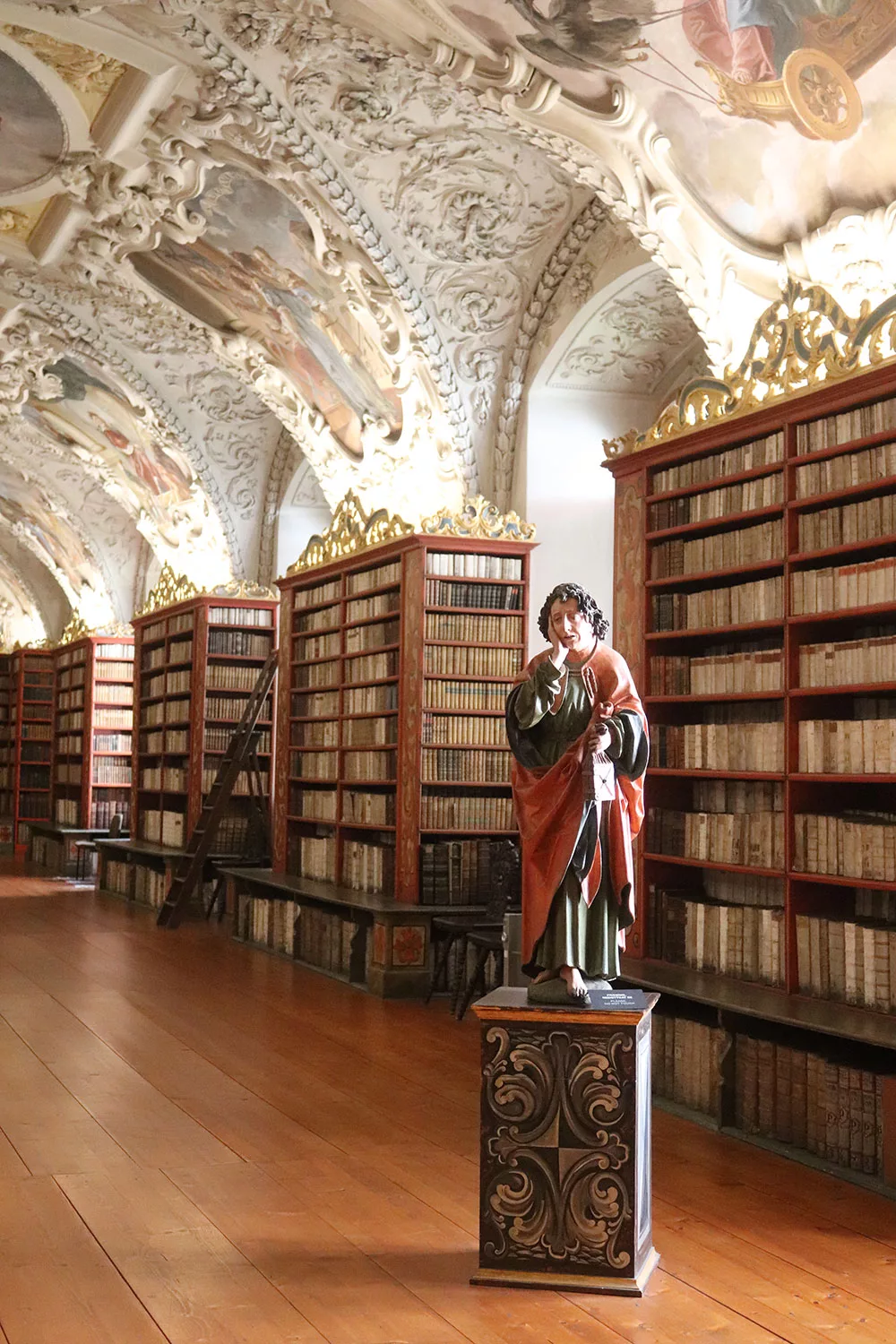
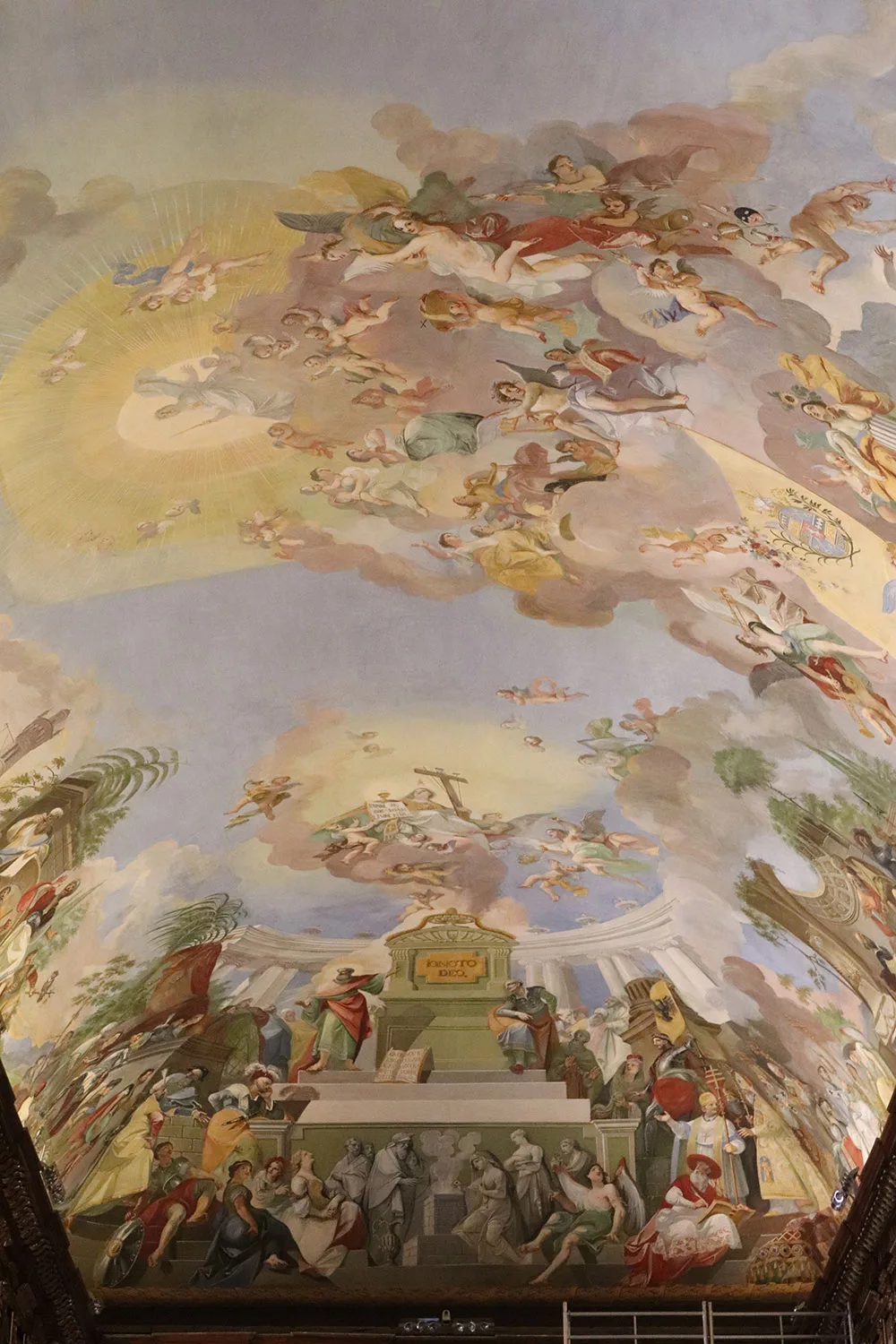
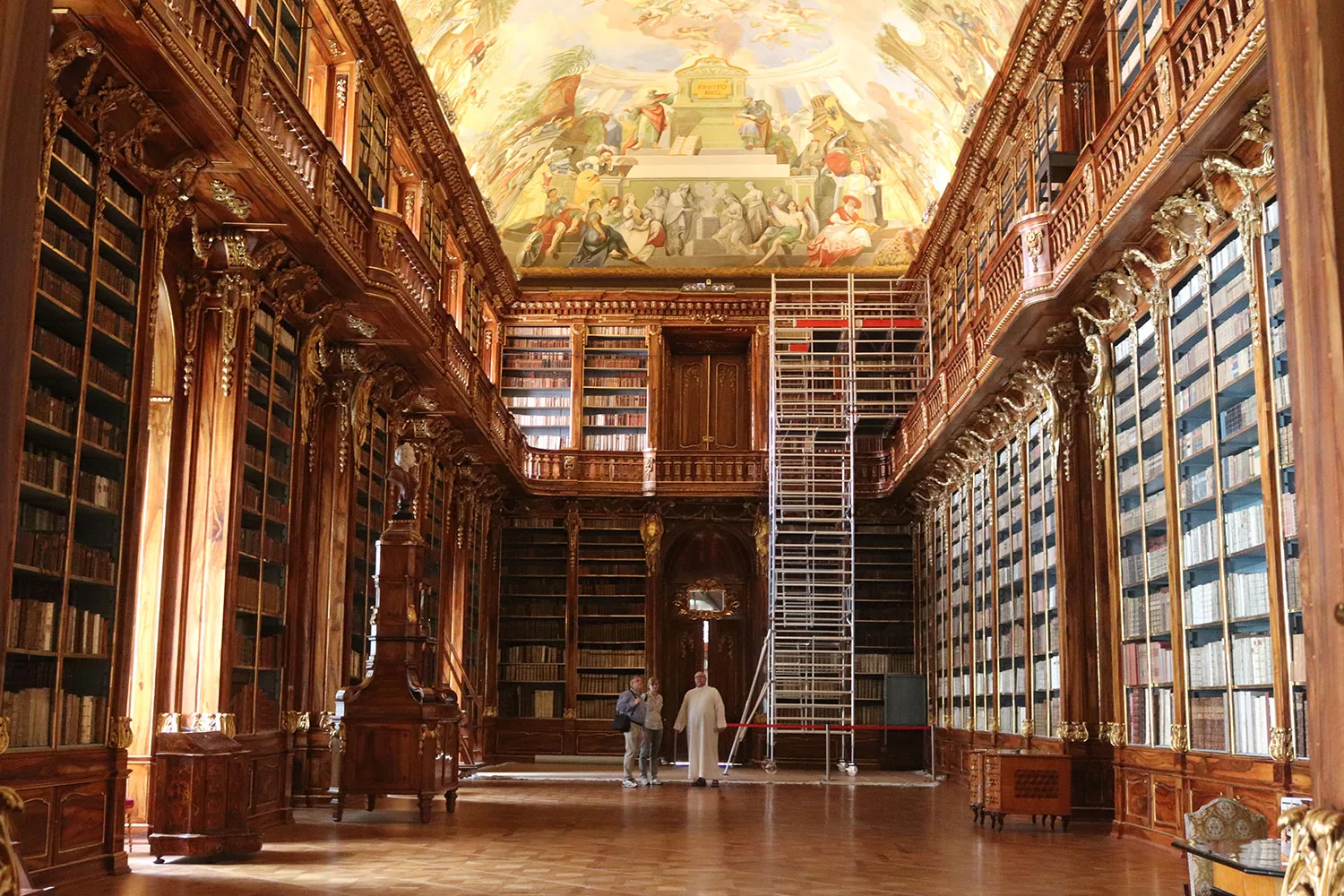
For libraries, I also recommend a visit to Strahov Library and Philosophical Hall. There’s a museum you can add on for an additional price but I visited only the libraries to save money. They are both Baroque but in different styles. You can’t go into these libraries (the philosophical hall is a library) but you can have a peek in to see how beautiful they are. The hallway also has a small exhibition on books, globes, and other academic collections from the library.
You can easily spend hours exploring the different areas of Prague Castle. Something to note is that it’s quite touristy in this area and the prices go up about 100 Czech koruna for food, etc.
Other Things to Do in Prague
Prague hosts quite a few art museums that can be bought under one ticket as the National Gallery. The Sternberg has Old Masters, and focuses on 15th-16th century religious art. I liked the Schwarzenberg more. They also specialise in Old Masters but there’s a bigger variety of themes (not just religious) and the art skews later to the 17th-18th centuries. But my favorite was the Trade Fair. They have a collection of mostly 19th-20th century art that ranges from impressionism to modernism to contemporary works. I absolutely loved a lot of their artworks and found quite a few Czech artists I like.
All three are nice galleries and I recommend them, provided you like the art they house. I did not get to visit Salm Palace which hosts contemporary art, or the Kinsky Palace which looks like it hosts exhibitions.
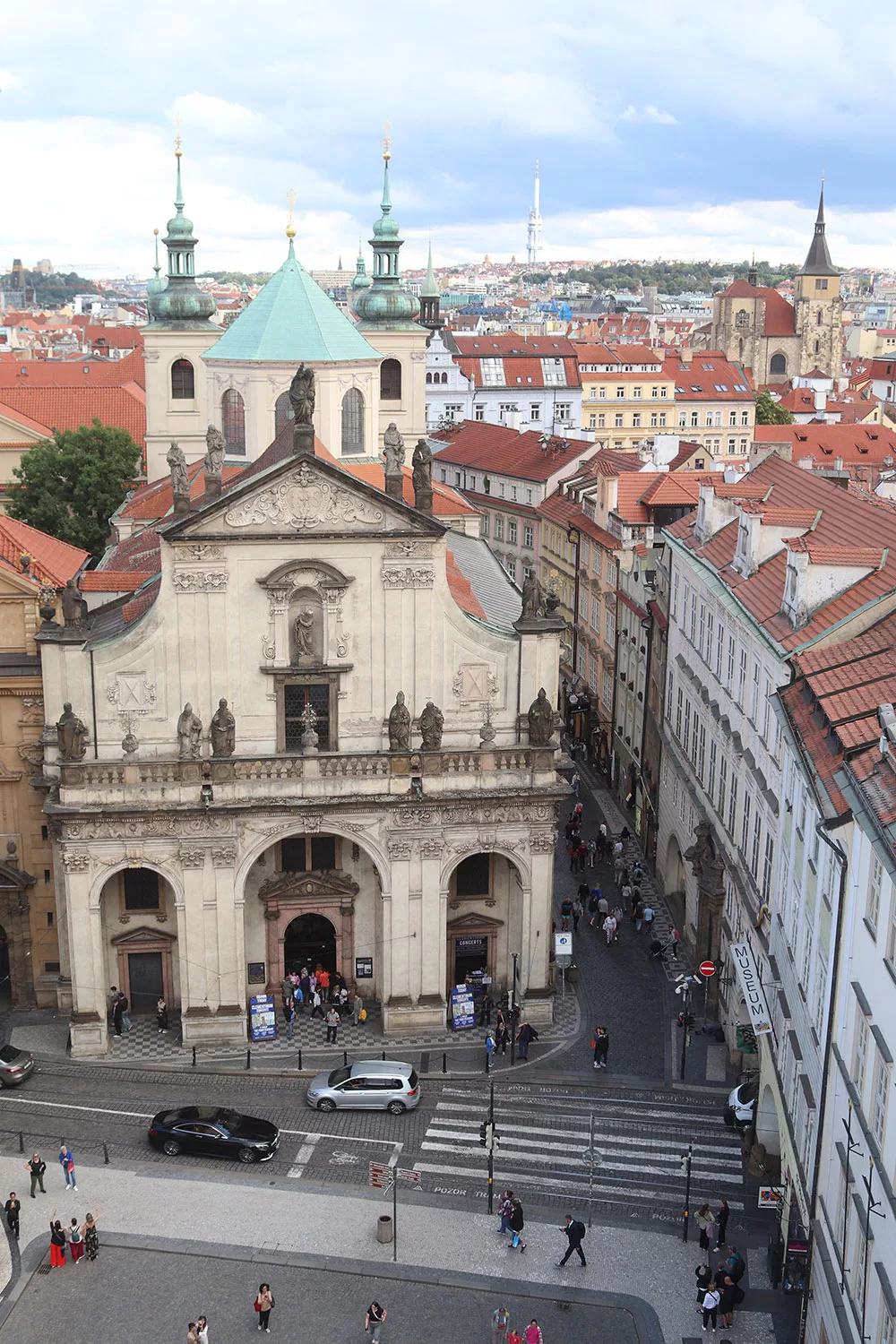
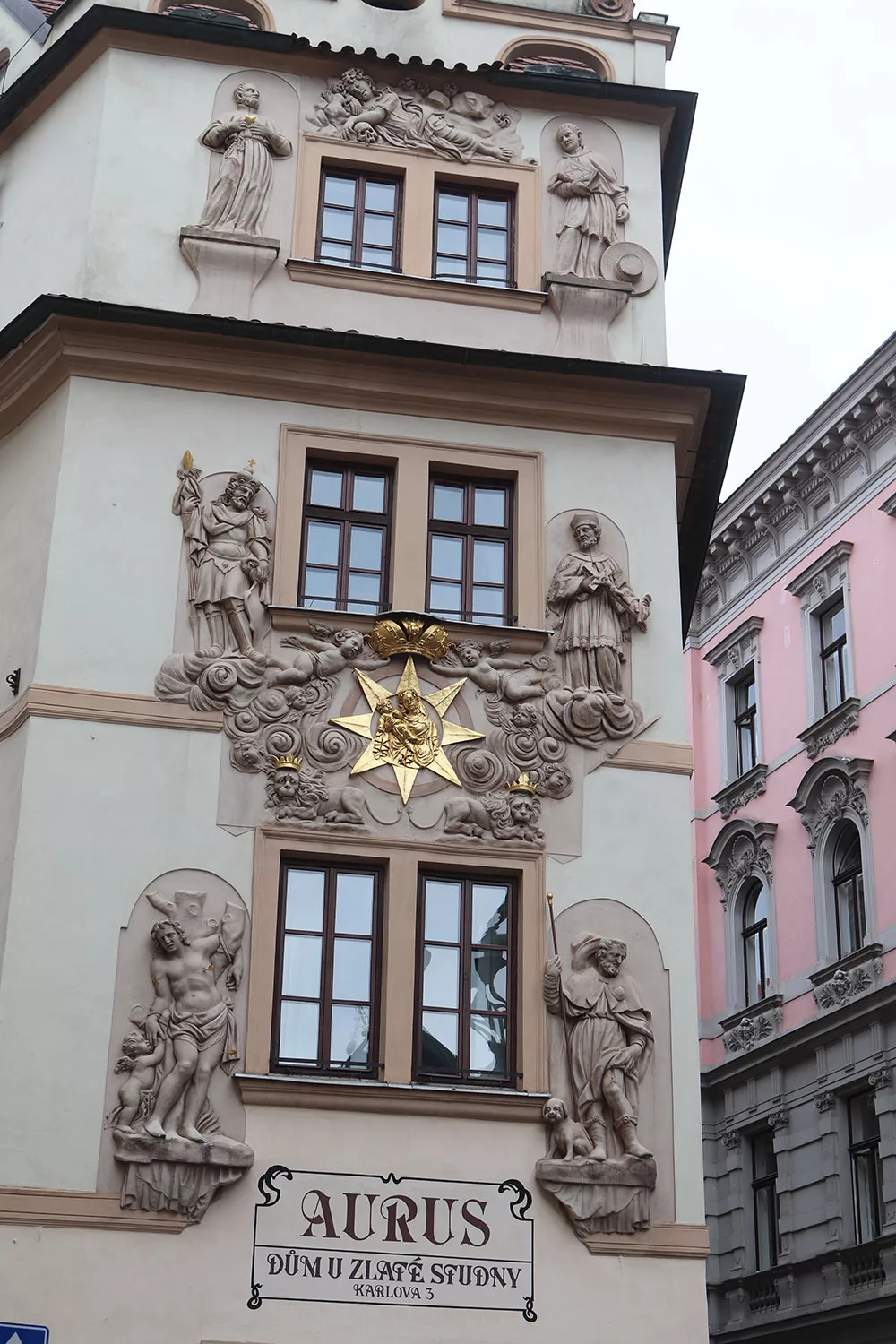

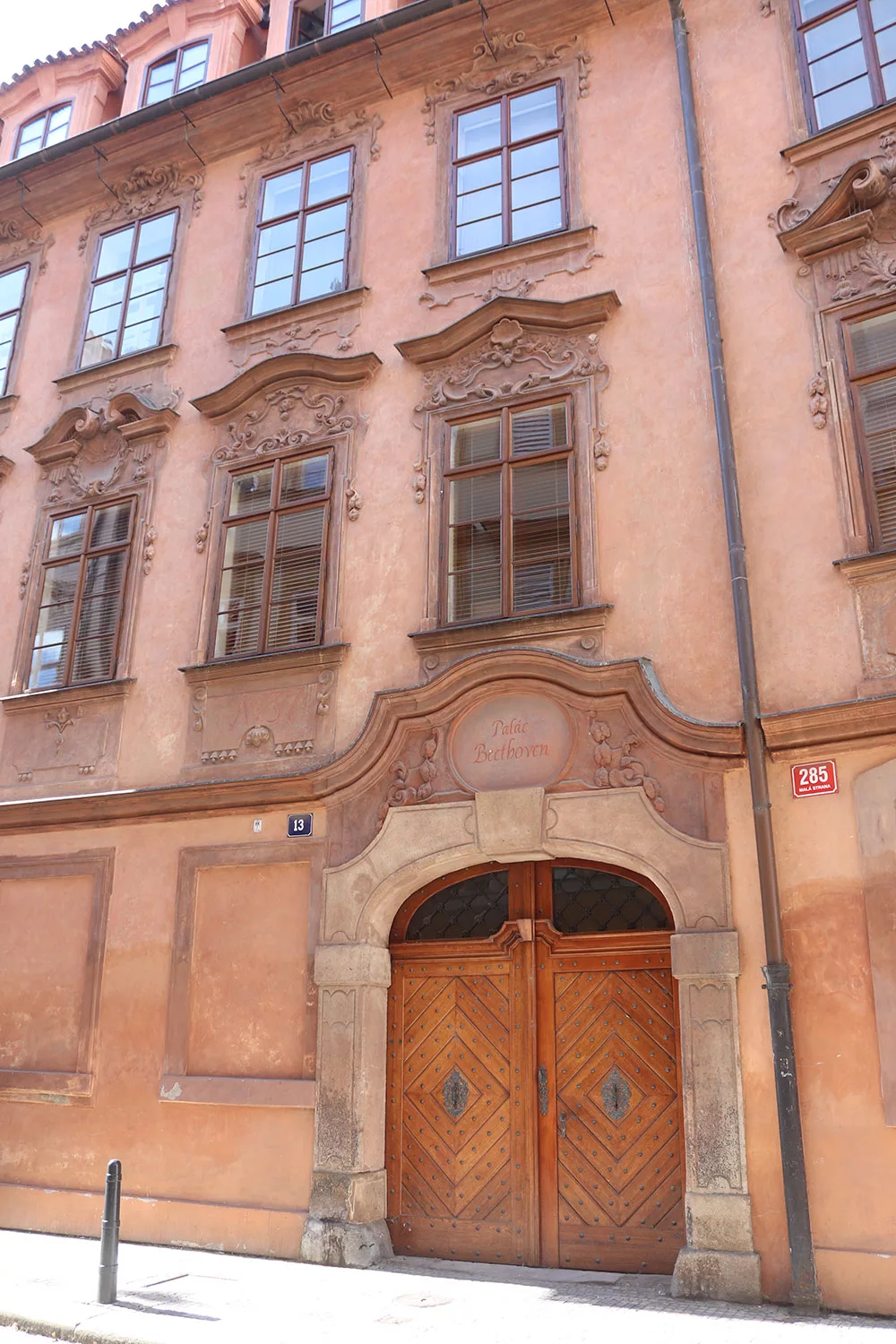
The National Museum has a huge exhibit on natural history, including a beautiful collection of minerals I became irrationally obsessed with. They also have a rather large exhibit detailing the history of Czechia and the area (Bohemia) that starts from the medieval era to the 19th century. I felt it was quite worth the visit.
The Mucha Museum is all about the beloved Alphonse Mucha, who lived and died and Prague. It is a bit small. It’s quite thorough and there are a few original prints and artefacts from the artist’s life but at my visit, it cost 350 koruna (about $15) which was way too expensive for what you see. I would’ve rather have spent it on a good biography.
The Museum of Communism details what life was like after World War II, when Czechia became a satellite state of the USSR. It’s an incredibly informative museum that examines so many different parts of life and how they were affected for decades. I definitely recommend it.

Speculum Alchemiae is a tour of the underground and hidden alchemy laboratories that date to the 16th century. I thought it would be a bit touristy or theatrical based on photos but the tour was actually super educational. The laboratories were abandoned and flooded for centuries, so the current appearance is a recreation but it’s done with historical accuracy. The guide will tell you all about what you’re seeing and what the purpose of each room was.
I knew nothing of Franz Kafka before my visit but opted to see the Kafka Museum and it was also worth it. Kafka was a writer from Prague (known for The Metamorphosis) and the museum exhibits his life in great detail. It is really well done.
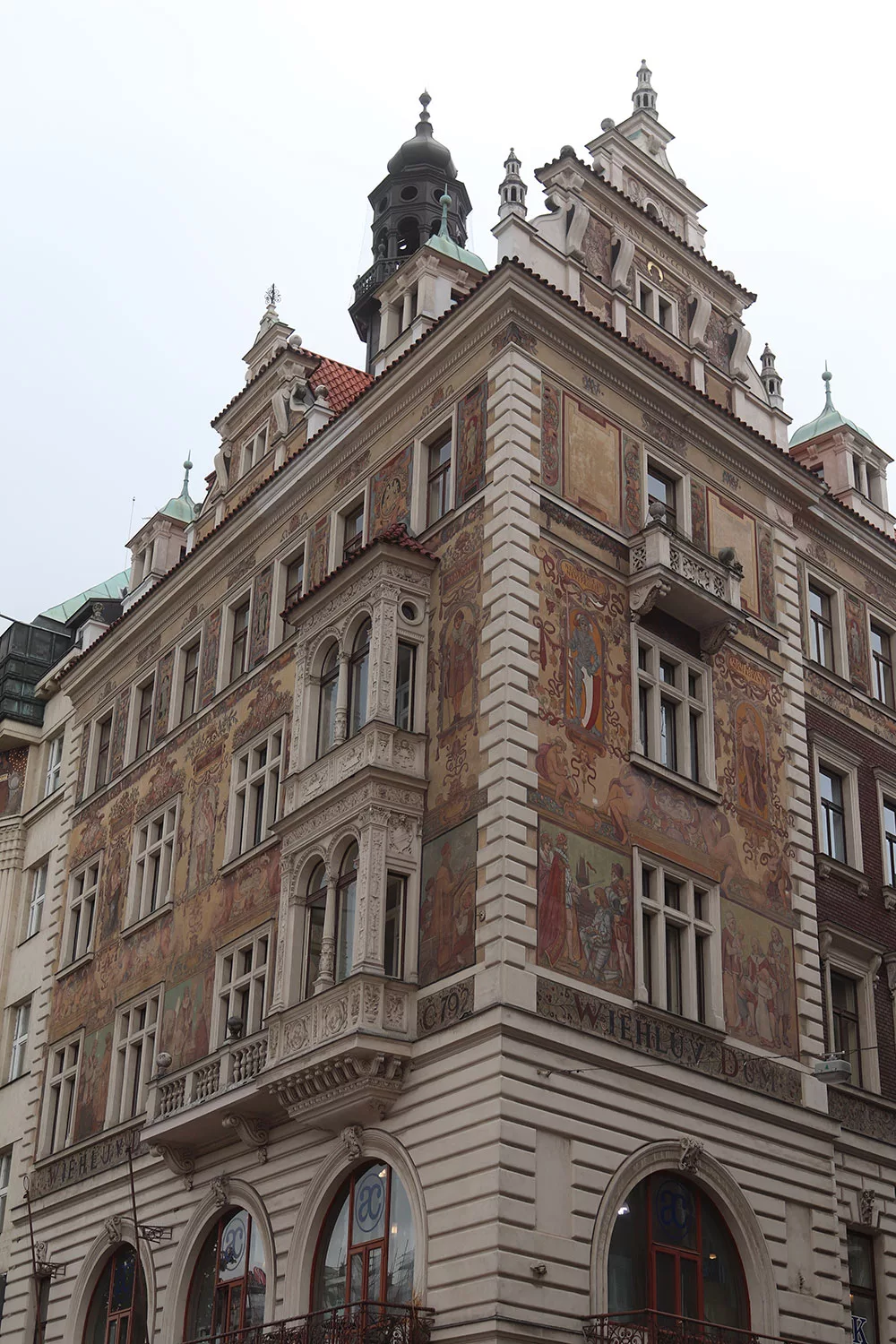
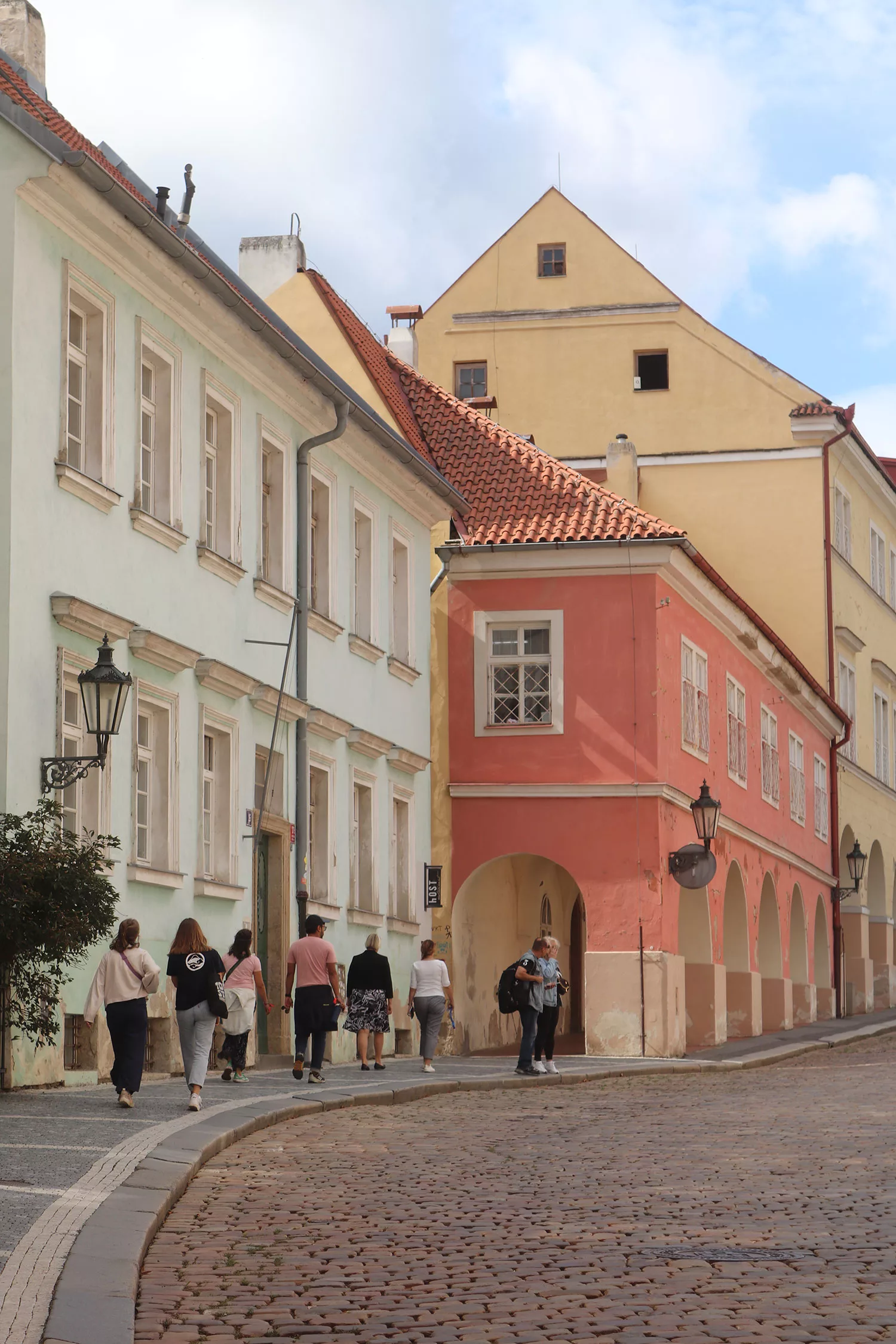
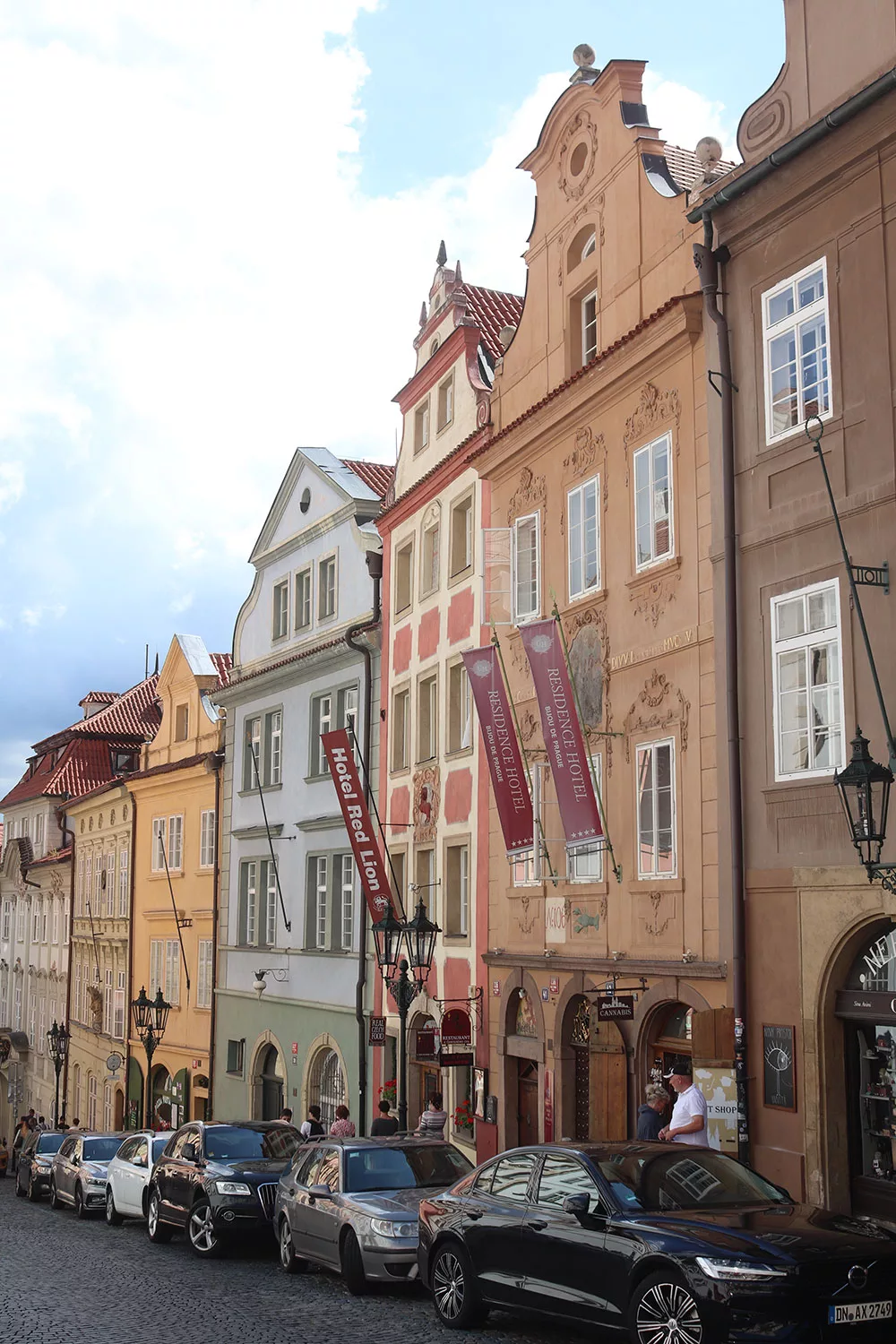

I saw the Story of Prague Museum got great reviews and thought I had to see it for myself. It was OK. It has an exhibit on medieval Prague, World War II, and then life in the 1990s (after communism). It’s good if you want something fast but I think the other museums of Prague give a more thorough overview. However they give free gifts to people who leave reviews, which is why they had so many great reviews on Google. I feel like that’s cheating. I would recommend either the Story of Prague Museum for something short OR a few other museums such as the National and Museum of Communism for something more in-depth. Save money and time.
Prague is also home to more beautiful buildings to explore. You can also stop in Basilica of St James, which dates to the 18th century and has a random person’s arm hanging near the front, and the 14th century Church of Our Lady of the Snows. The latter has a lovely rose garden in front of it during the warmer months.

I made it all the way up to Troja Chateau to find it was closed for a special event. It’s a 17th century Baroque palace known for its frescoed rooms, and the event staff kindly let me in for a quick look. I only got to see a few small rooms but they were very beautiful.
There were also a few museums I wanted to visit and didn’t, plus I also didn’t make it to Vysehrad, a fort and cathedral complex that date back over 1000 years. I had about 4 days in Prague but there was just so much to see in so little time.
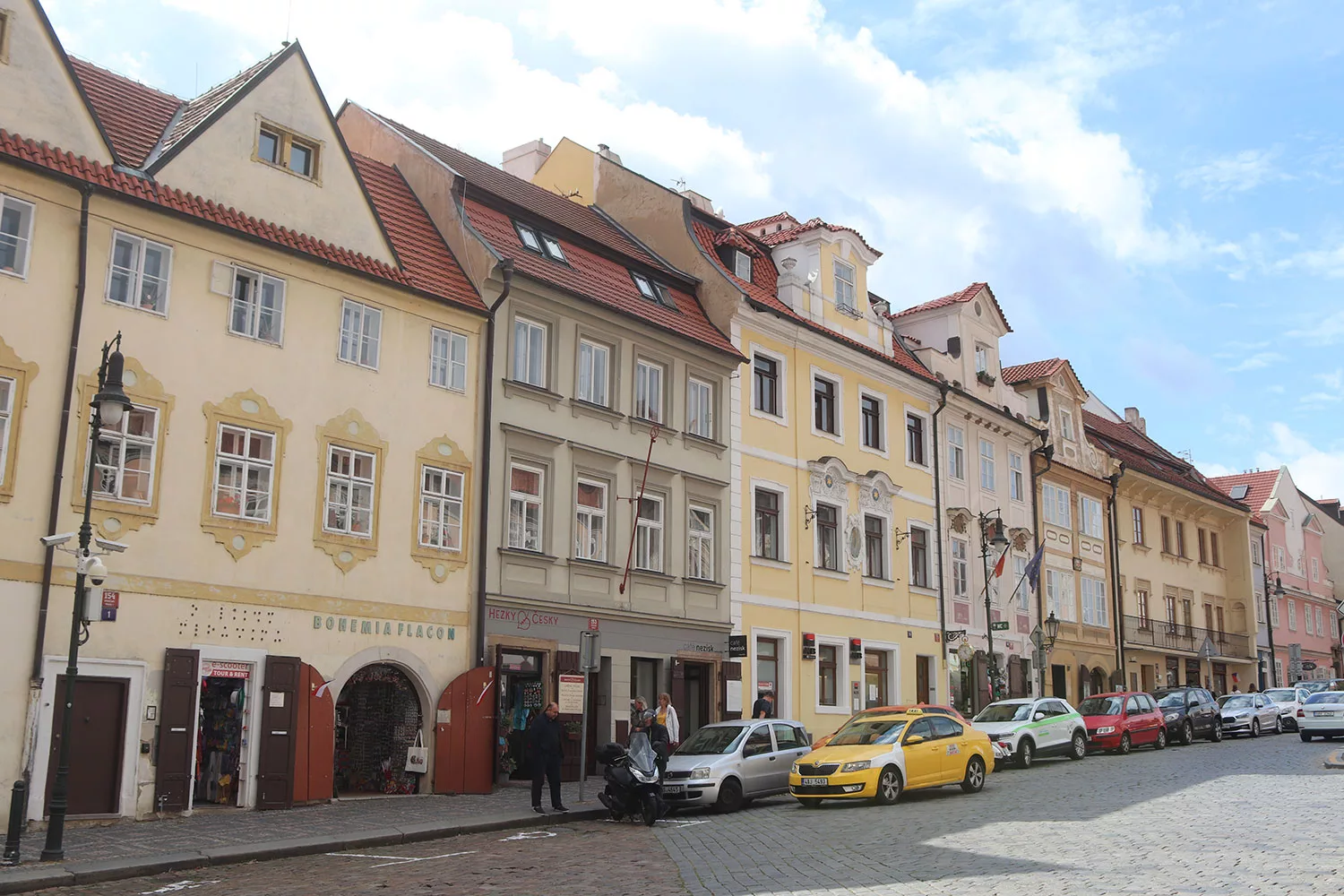
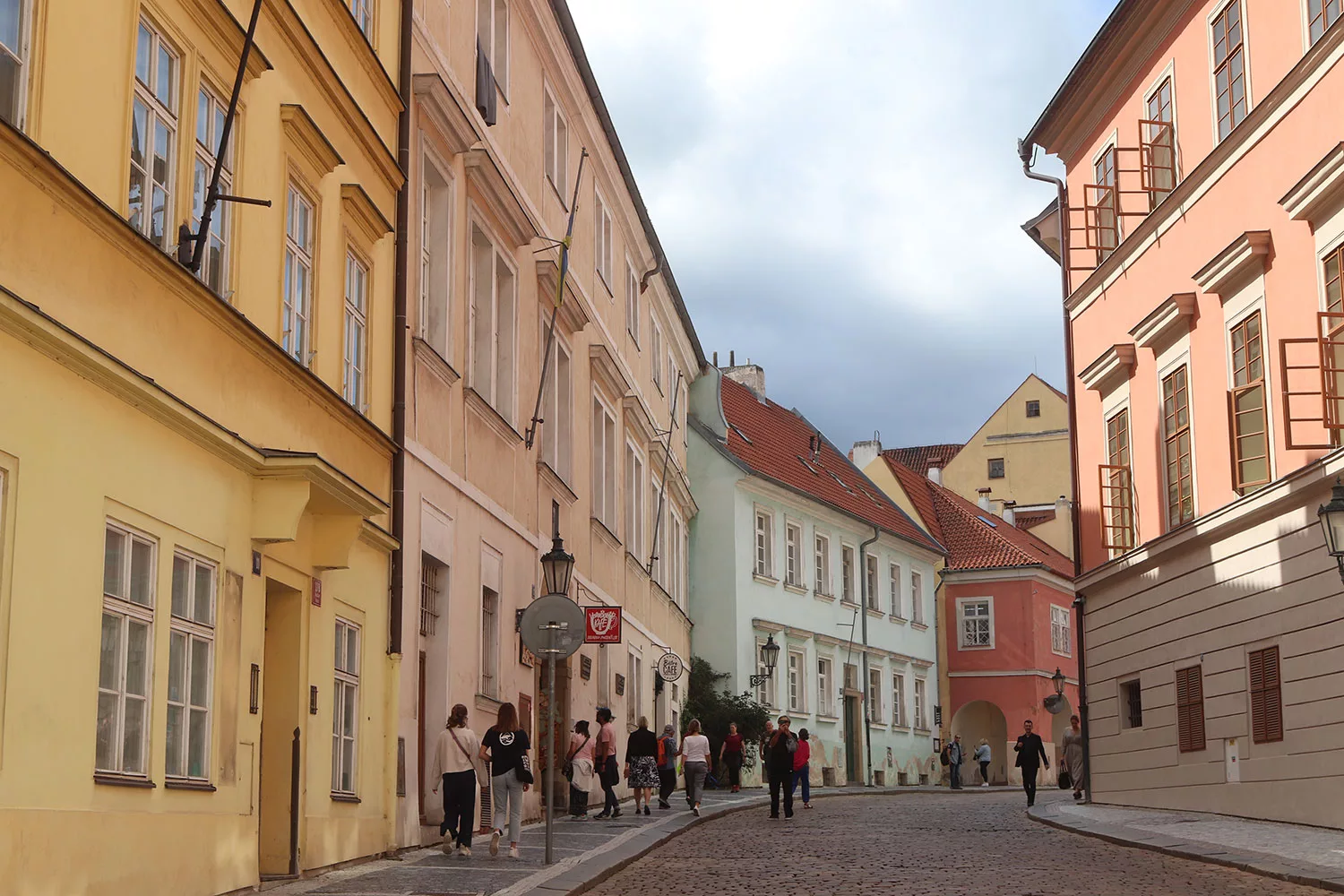
Prague tends to be marketed as a medieval city and it was definitely that but quite different from what I was expecting since the art nouveau style was way more dominant. You could spend weeks just going along the streets and looking at the distinct statues and architectural details of each building, and admiring how nice they look next to each other with all their different pastel colors.
It’s funny because I hadn’t really heard about Prague being an art nouveau city, but it really governs the feel of the city. Not that I’m complaining! I was just surprised. Maybe I don’t pay enough attention. The medieval parts of the city are very beautiful, though.
Saving Money in Prague
I had a lot of issues because the museums were quite expensive, and I saw a lot. Prague does have a Prague Visitor Pass which can help you save money if you revolve your trip around the pass. However the activities didn’t correspond to what I wanted to do. The cheapest one pass 2400 and the included activities that I did amounted to 1598 without the pass, so it really wouldn’t have been worth it for me.
Also beware that a lot of the activities are already included in one ticket, and the Prague Visitor Pass does not clearly state that and it’s misleading. For example, Prague Castle, St Vitus Cathedral and St George’s Basilica are all listed separately for 450 koruna. So that’s 1350 koruna right? NO! St Vitus Cathedral and St George’s Basilica are included under “Prague Castle” but the website is currently not clear about that at all. So all three of those still total to 450 koruna, which can seriously affect your calculations.
The same goes for the Jewish museums – which includes the city’s synagogues. They’re all listed separately for 500 koruna even though it’s the same ticket.
Getting around the city is quite walkable and public transport is quite cheap.
I started my blog because I want to help people plan their trips, which includes what to skip and spend your precious time and money on instead. So I hope this blog post helps you narrow down what you want to do and maybe what doesn’t look so great so you can save the $10 or so on the admission.

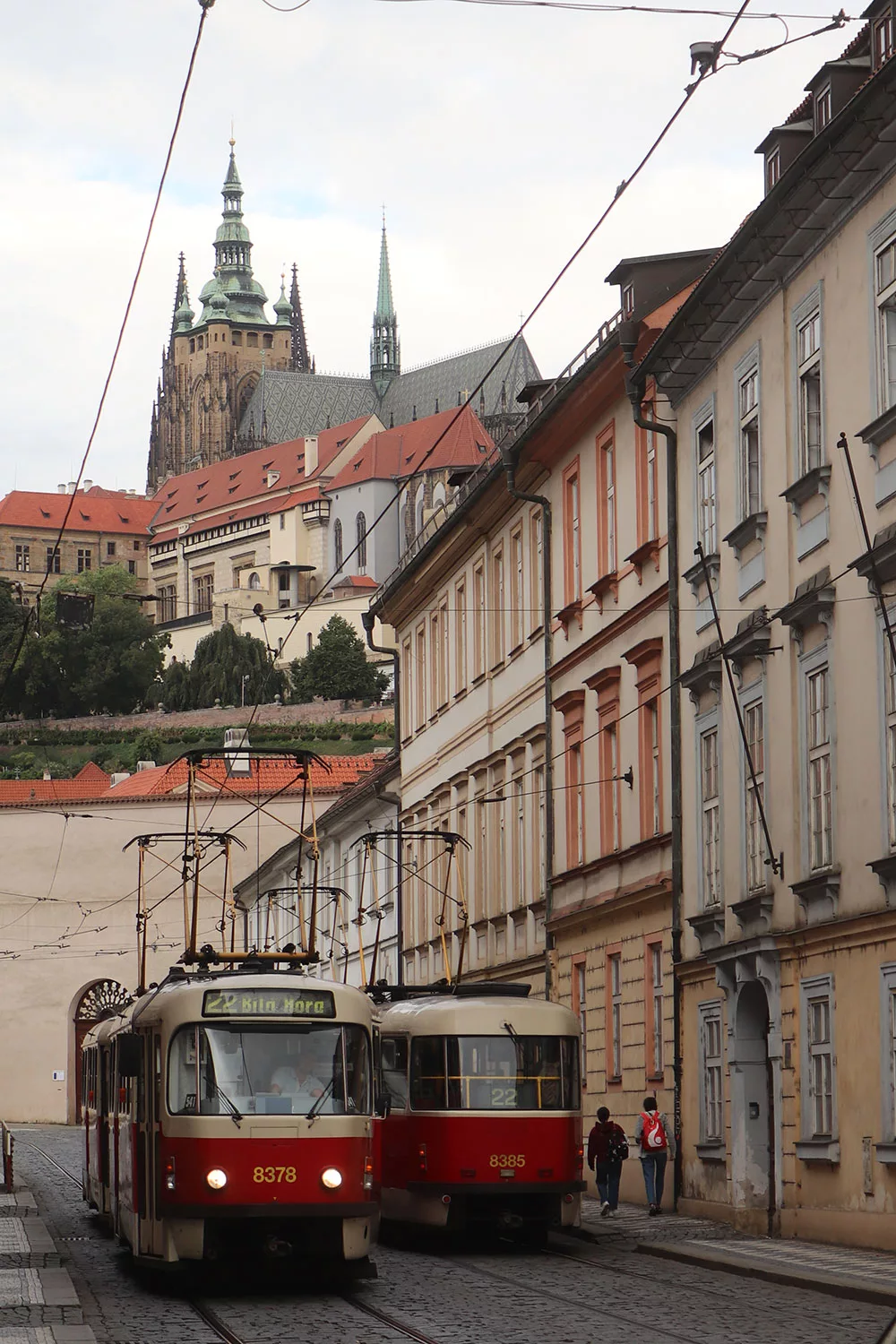
Buy a print of this photo from my store!
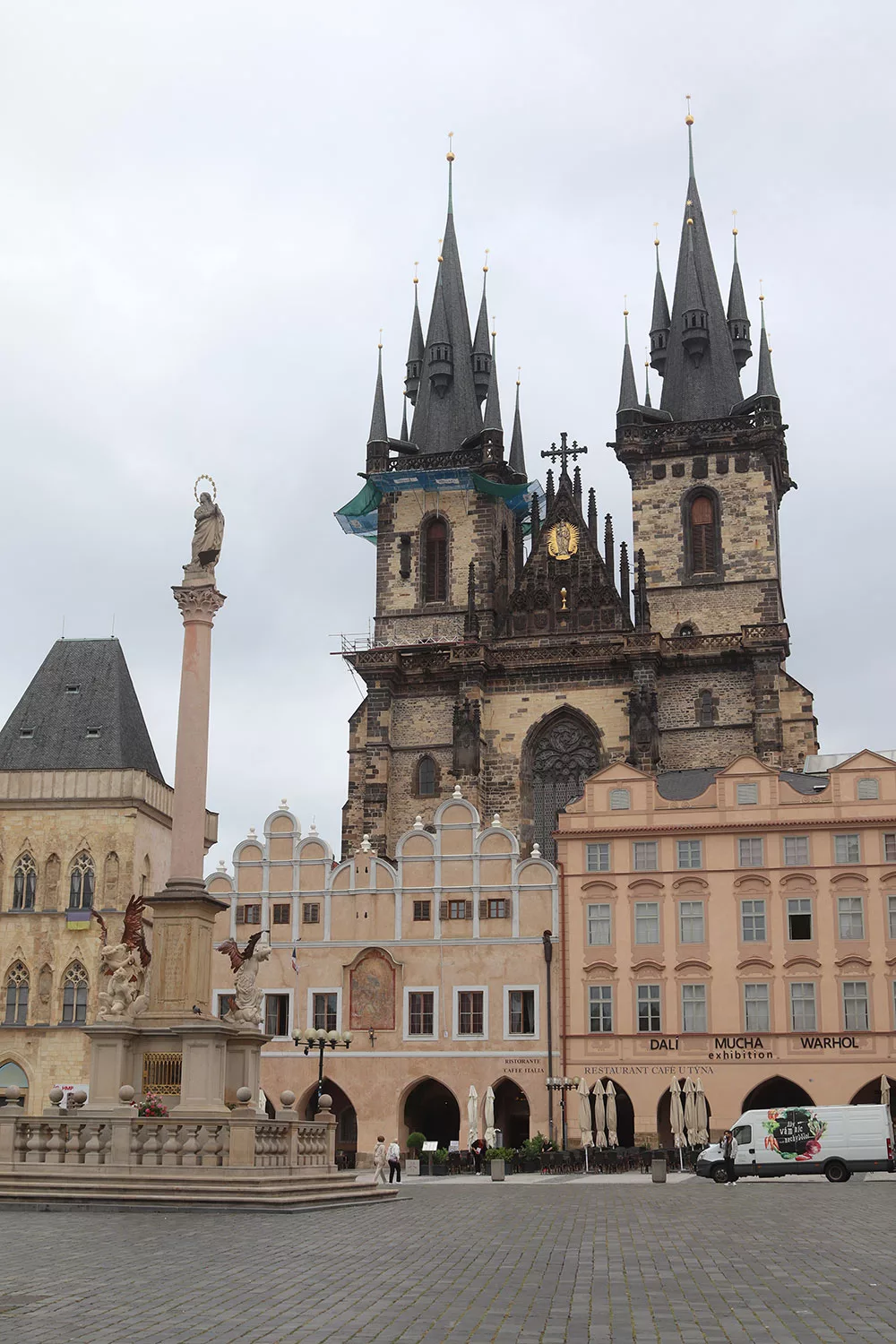

I really liked Prague and I wish I had more time to explore beyond the tourist zones. I had about 4 days and I got to cover a lot of ground but I didn’t get to venture into other neighbourhoods or really get a taste of local life. My days were also a bit rushed. It’s a big place with a lot to do, so plan accordingly.
I’m so happy I got to go, though. It’s a lovely city and I’d absolutely love to return and get to see those places that I missed the first time around. Whether you’re visiting for the first time yourself, or planning a return trip, I hope my post has helped you!
Book an Organised Tour
Book Your Stay
Need a Book on Prague?
I’m happy to partner with Bookshop.org to promote sales from independent booksellers.
About the Author
My name's Lilly and I'm a Baltimore-based travel blogger with a focus on art and history. I work full time and manage to get in several trips a year. Learn more about me.Tags: czechia, europe, prague







